BEING, HALL ART FOUNDATION, SCHLOSS DERNEBURG, GERMANY, 2017 - 2018
On view until 31 March 2018
This exhibition is my largest in Germany to date, bringing together works from the beginning of my sculptural journey to the most recent.
Using the specific qualities of the different spaces within Schloss Derneburg, I have tried to present the roots of my sculptural thinking and some expanded fields.
In the basement of the Verwaltung Haus are four pairs of 'Box Works' that refer to alchemy and the similarity in form between animal and mineral life. They include Body and Light (1993) where a cast of a human brain made in tree rosin sits on top of a closed lead cube. It is paired with another lead cube, Meaning (1993) pierced with an orifice like a mouth that allows us to see the interior darkness within the lead void. The brain is nearly translucent, the mouth open, but silent. The idea is to pair organs and perceptions and continues with the other pairings: ears and kidneys; heart and nostrils; eyes and testicles. In each, space and darkness is contrasted with the evocation of organs that contain or imply the fluidity of light.
In the same space is One Apple (1982), 42 lead cases built around the sequence of growth of an apple: from the time the petals fall from the flower to the mature fruit. One Apple introduces the invisibility of time as a critical subject. Installed on a low plinth, each piece is similar in size to the one beside it while actually growing in size. The work references both the Apple in the Garden of Eden, Newton's Apple and the enlargement of the universe.
Three early lead body works contribute to this review of the first phase of my work in the 1980s. Membrane (1986), is one of the first singular standing figures and holds a sheet of lead. This work refers to the ability of a surface not only to hold an image (The Veil of Veronica), but also its ability to deny us inner truth. My art has always been critical of the rule of appearances and Membrane introduces the fact that we all live on the other side of our skin.
Rise (1983-1984) acknowledges sculpture's eternal relationship with mortality. Here is an empty body case with its head straining towards the sky. The final work in the basement area is Close I (1992), a bodyform splayed and prostate on the floor - an 'X' that marks a fixed point on the surface of the Earth. It embodies our dependency on the planet and acknowledges that each body is a point of reconciliation between centrifuge and gravity. While sculpture has always attempted to make a fixed point, the Earth is spinning on its own axis at around 1600 km an hour. All celestial bodies are in motion and the entire universe is expanding.
All of the 'Bodycase' works I am showing were made from moulds taken directly from my body. They are a materialisation of a real event of a real body, in real time. They attempt to confront the viewer with their own embodiment in space and time and use verticality and laterality as a conscious reminder of our provisionality.
Upstairs, in the cloister, I continue the theme of expansion. Eight works from my Expansion Field series are aligned along the east side of cloister. Here, the idea of a case for a body continues, but now they are made with the orthogonal geometry of a box or architecture. These works invoke the expanding nature of consciousness, in spite of bodily determinism. In Expansion Field I am applying the Hubble Constant, the idea that space is a state of continual expansion, to the subjective space of the body in different attitudes of emotional contraction or extension. These eight works attempt a bridge between the darkness of the body and deep space.
This linear display is complemented by a series of body prints and woodblocks. Multiple woodblock prints of planes equivalent to those found in Expansion Field make x-ray-like images of the space of the body, where the grain of the wood forms a subtle, translucent crosshatching. These woodblock prints are paired with body prints made with a mixture of crude oil and petroleum jelly that indicate instant indexes of lived time. These works prompt a conversation between the Palaeolithic gesture of presence and Modernism's attraction to the void.
Using three separate former monk's cells off the cloister I present the core of my research: the relationship between mass and space carried through skin, grid, and volume. The first work Learning to See VIII (1996) is a solid iron casting of embodied consciousness: an alert, aware, erect body - its form taken from a mould of me. It has one closed surface which acknowledges the closed eyes and internal vision.
This same body posture was used again for the three-dimensional scan that produced Set (2017), the most objective mapping of the internal subjective space of the body achieved in any work. Here, the classical binding grid structure of Modernist architecture is used to describe the inner state of another alert, aware, erect body. This pairing is then qualified by Fit (2016), the most complex evocation of intimate space as architecture with 58 frames that interconnect and identify a high- energy zone of a body's presence.
In the courtyard are geometric evocations of the body at rest and one aloof contemplator. These works are deliberately displayed in the manner of a Zen garden, but rather than the rocks of Ryōan-ji they evoke the silhouettes of buildings that contain human life. Whether tense and foetal or restful they continue the theme of humankind as indistinguishable from its made environment.
These works are overlooked by a regal bodyform seated high on the balcony on the façade of the entrance tower to the castle. Unlike a classical caryatid, the work weighs down on the existing architecture. While evoking the inherent power of the enthroned potentate, by placing the work on the outside edge of the balustrade, it intimates imminent fall.
The exhibition continues on the first floor with the installation of Sleeping Field (2016). Architectural language used to describe a city made up of 700 miniature bodyforms. Each work is made from 29 discrete parts, re-configured to make up 70 original forms, each cast 10 times. The work refers to humankind's dependency on the city as an instrument of survival. Sleeping Field can be seen as an urban landscape, but it also refers to the present crisis of migration and the camps that have become familiar in Turkey, Greece and Germany.
Opposite this work is a series of small drawings that invoke architectural space as an equivalent for mind. In an adjacent room lies Distillate I (2003), one of the very earliest built 'Blockworks' in which blocks of six discrete sizes map the space of an unconscious body. The work proposes an alternative model of a landscape or citadel made of multiple cells.
In the adjacent room is a singular work Under My Skin IV (2002), which considers the fact that presence is not dependent on appearance and that state of mind is instantly transmitted through the silence of body language.
In the grounds of the Schloss and in the vicinity of the former cow barn is Block (2017), a 46-tonne red granite 'Blockwork' made of 22 stones that sit one on top of the other using their deadweight as a constructive principle. I think of this work as a meditation on the current and temporary state of humankind embedded in the city, brooding about its future. It purposefully conveys the attitude of a lazy Buddha.
Inside the Barn is the second 'Field' installation: European Field, made in 1993 from clay taken from Småland, Sweden - a work which evokes the unborn while reminding us of our ancestors. European Field reverses the normal economy of contemplation, making the viewer the subject of its gaze. This is deliberately uncomfortable. We are cast as actors who have unconsciously walked onto stage and are now facing an audience that asks: "Who are you? What are you? What kind of world are you
making?"
European Field is complemented by 12 contemporary drawings made of earth, oil and carbon.
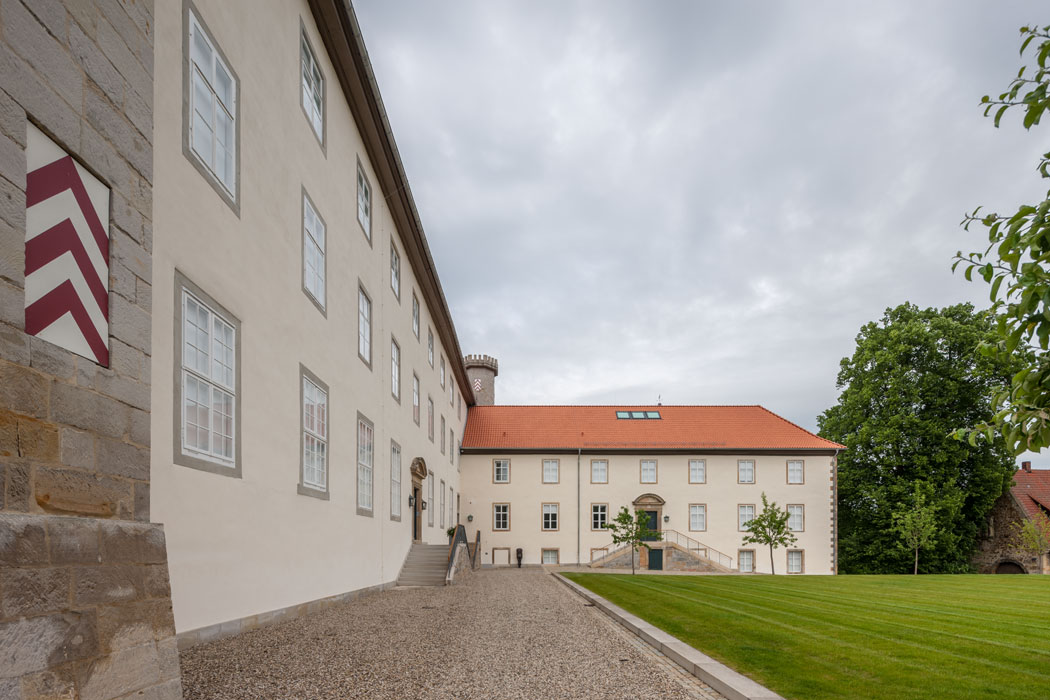
HEAD, 1995
Cast iron
164 x 51 x 55 cm
Installation view, Hall Art Foundation | Schloss Derneburg Museum, Derneburg, Germany, 2017
Photograph by Heinrich Hecht
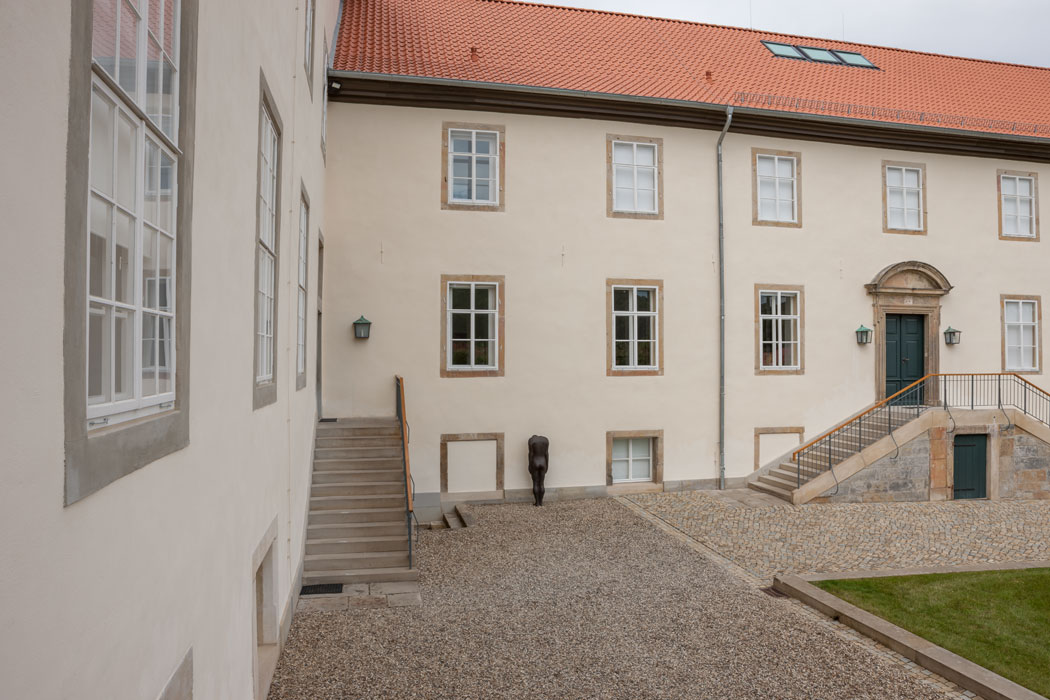
HEAD, 1995
Cast iron
164 x 51 x 55 cm
Installation view, Hall Art Foundation | Schloss Derneburg Museum, Derneburg, Germany, 2017
Photograph by Heinrich Hecht
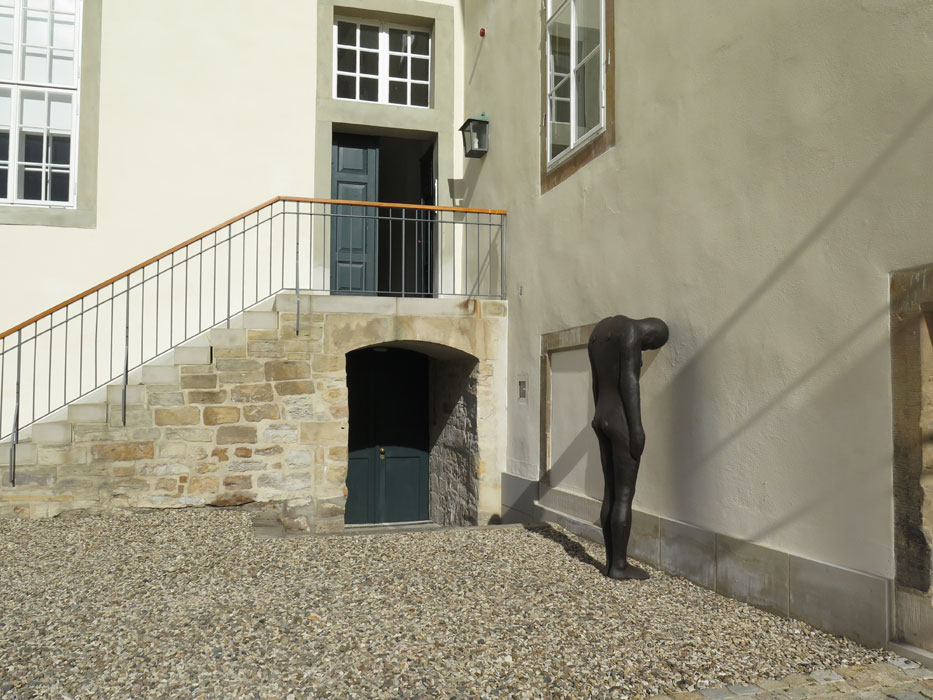
HEAD, 1995
Cast iron
164 x 51 x 55 cm
Installation view, Hall Art Foundation | Schloss Derneburg Museum, Derneburg, Germany, 2017
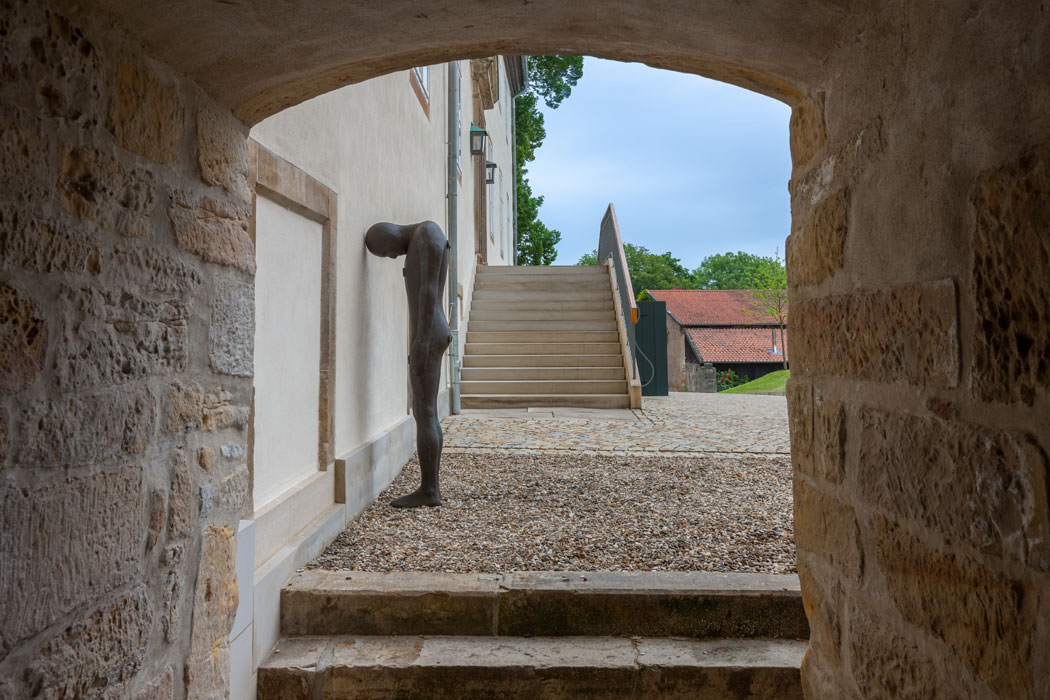
HEAD, 1995
Cast iron
164 x 51 x 55 cm
Installation view, Hall Art Foundation | Schloss Derneburg Museum, Derneburg, Germany, 2017
Photograph by Heinrich Hecht
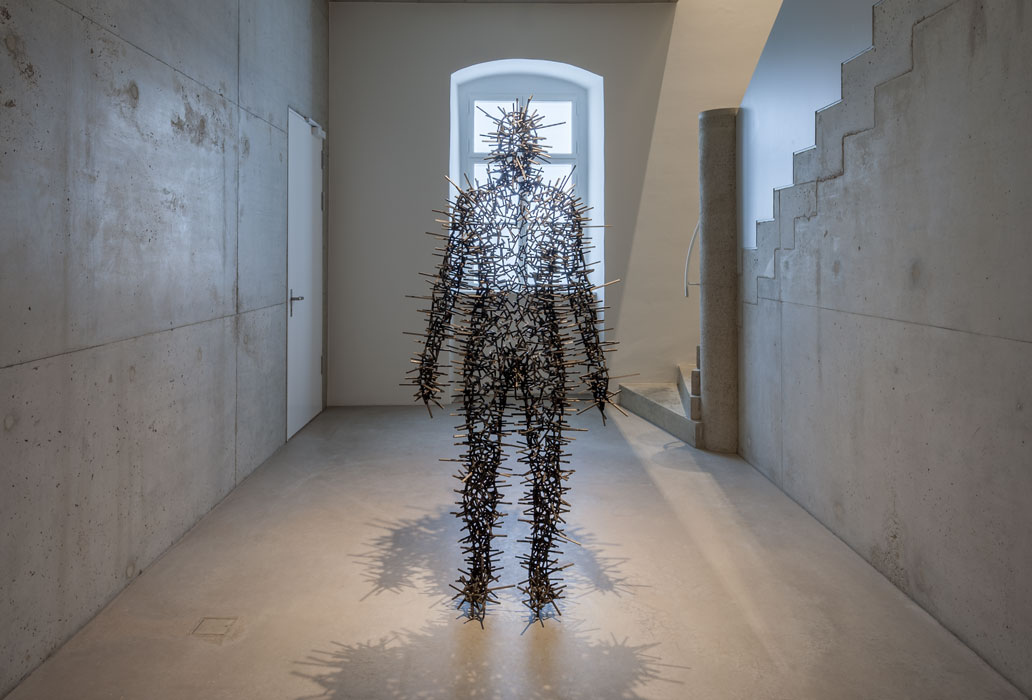
UNDER MY SKIN IV, 2002
6 mm square section mild steel bars
206 x 92 x 50 cm
Hall Collection
Installation view, Hall Art Foundation |
Schloss Derneburg Museum, Derneburg, Germany, 2017
Photograph by Heinrich Hecht
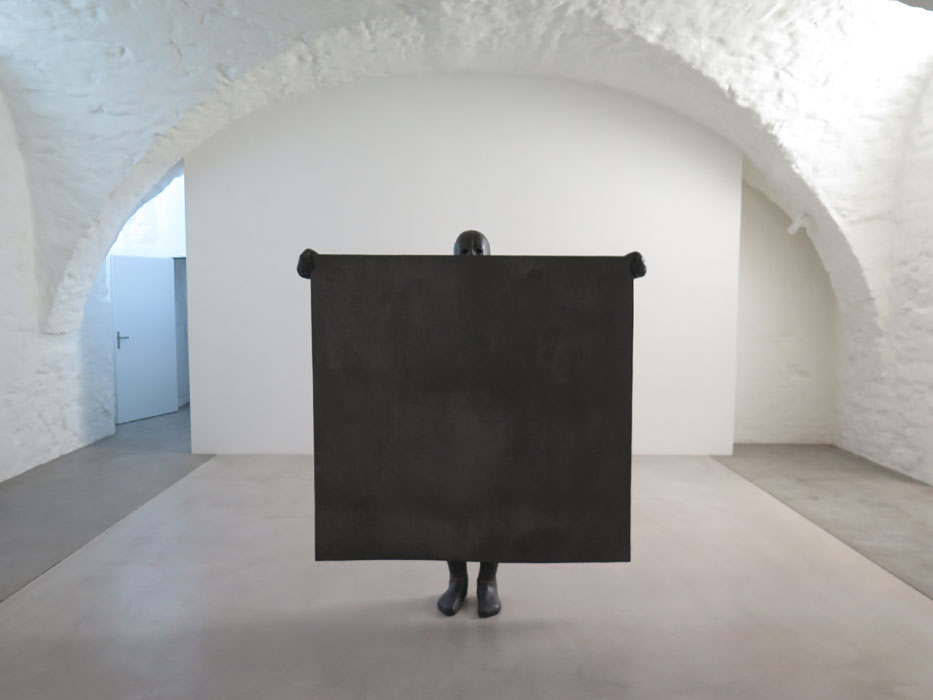
MEMBRANE, 1986
Lead, fibreglass and plaster
192.7 x 172 x 36 cm
Installation view, Hall Art Foundation | Schloss Derneburg Museum, Derneburg, Germany, 2017
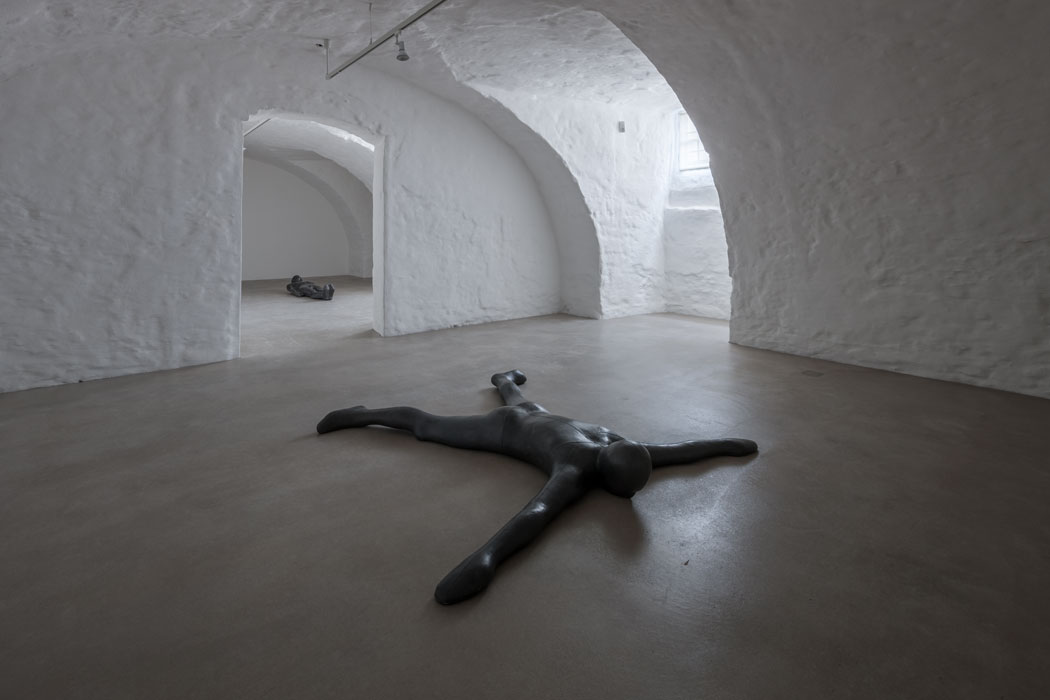
CLOSE I, 1992
Lead, fibreglass, plaster and air
25 x 195.6 x 190 cm
RISE, 1983-84
Lead, fibreglass, plaster and air
37 x 54 x 202.5 cm
Installation view, Hall Art Foundation | Schloss Derneburg Museum, Derneburg, Germany, 2017
Photograph by Heinrich Hecht
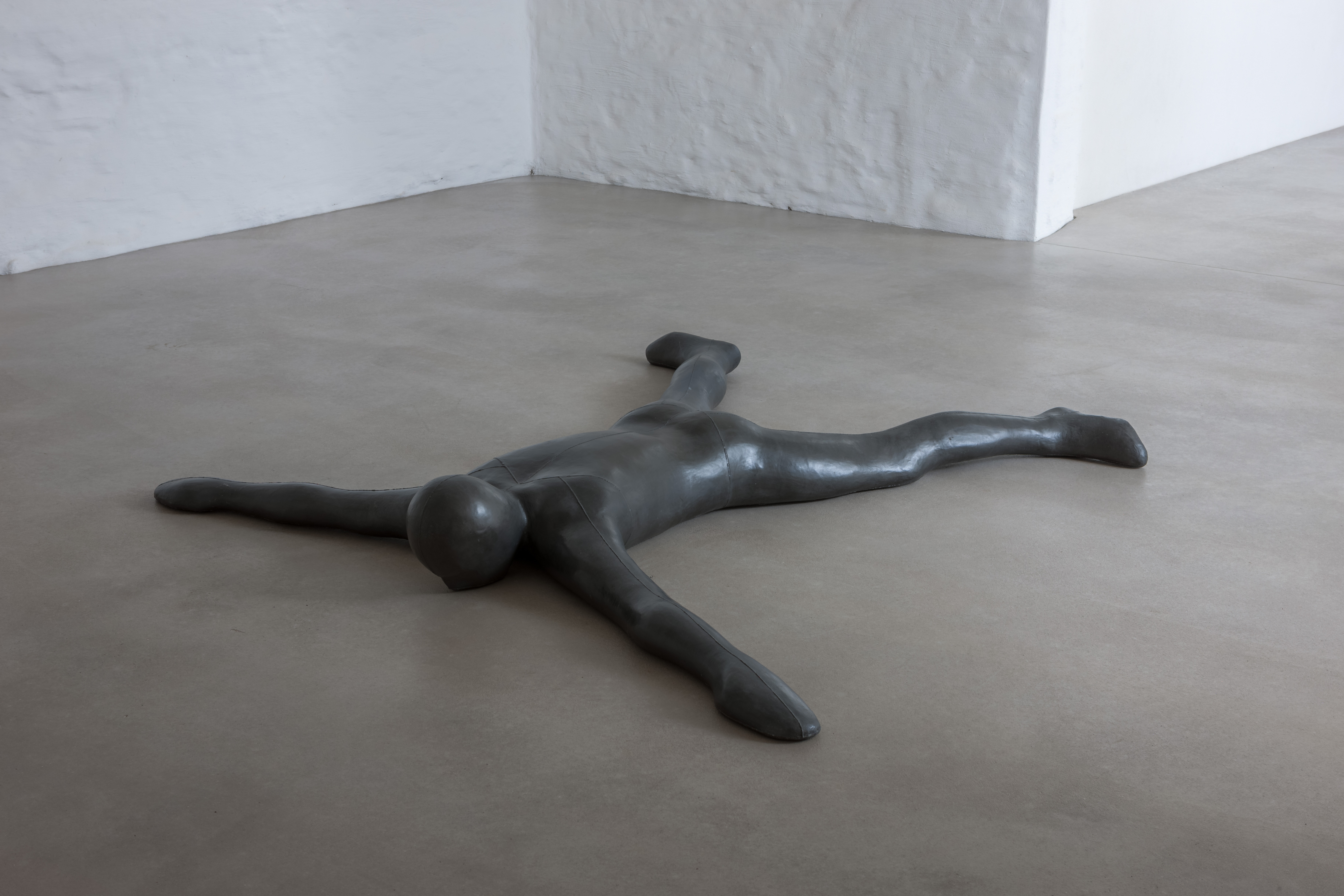
CLOSE I, 1992
Lead, fibreglass, plaster and air
25 x 195.6 x 190 cm
Installation view, Hall Art Foundation | Schloss Derneburg Museum, Derneburg, Germany, 2017
Photograph by Heinrich Hecht
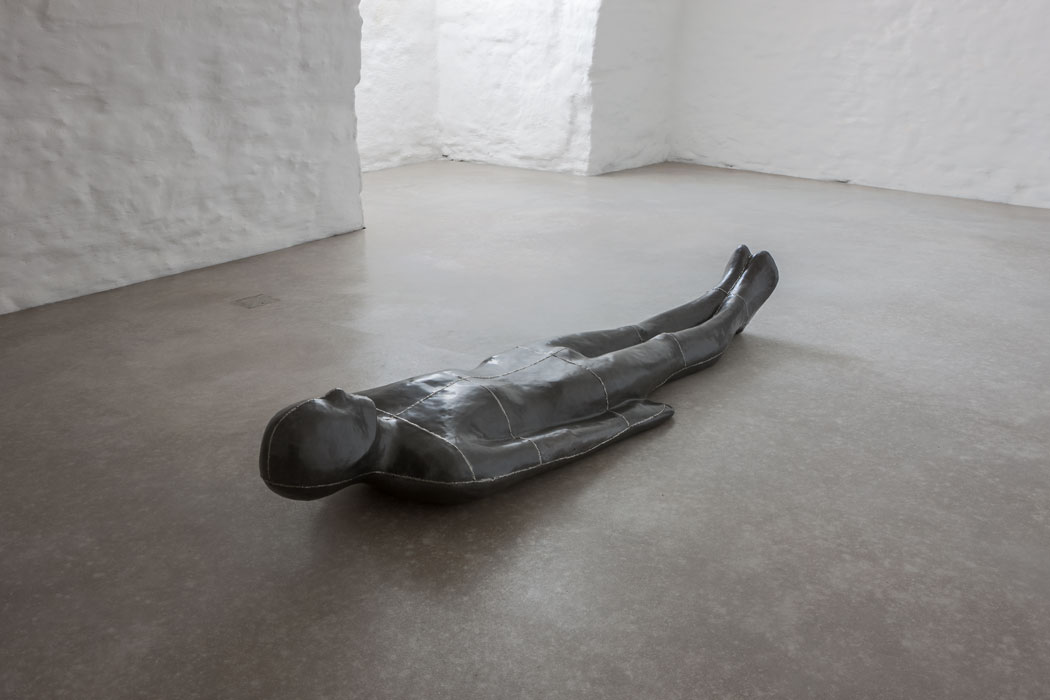
RISE, 1983-84
Lead, fibreglass, plaster and air
37 x 54 x 202.5 cm
Installation view, Hall Art Foundation | Schloss Derneburg Museum, Derneburg, Germany, 2017
Photograph by Heinrich Hecht
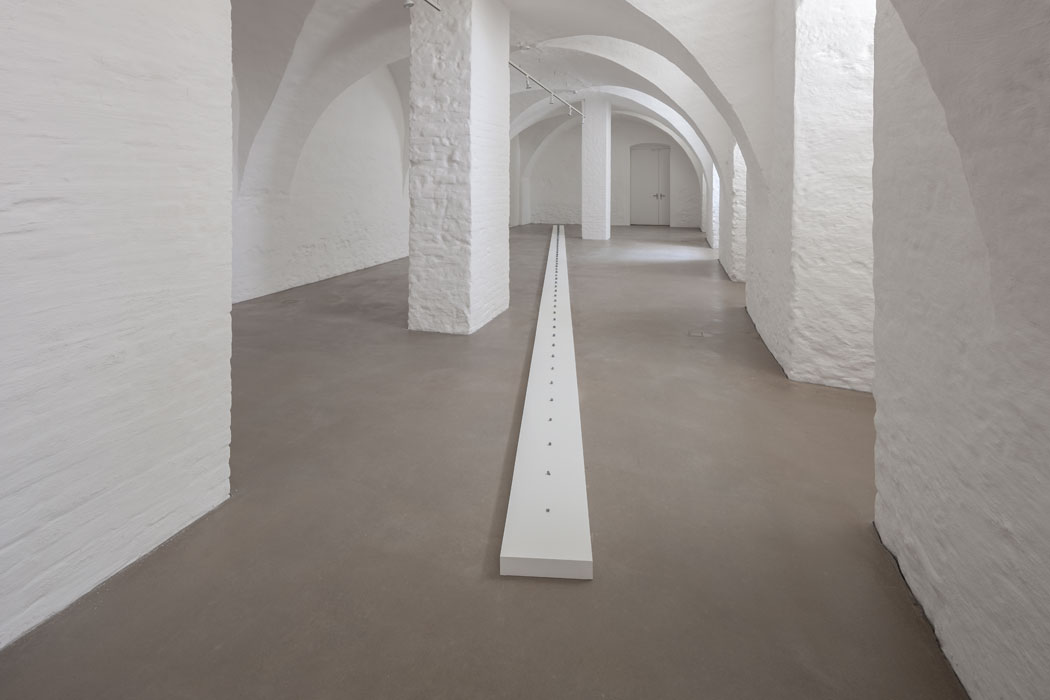
ONE APPLE, 1982
Apples, lead and air
7 x 1110 x 7 cm (53 pieces altogether)
Installation view, Hall Art Foundation | Schloss Derneburg Museum, Derneburg, Germany, 2017
Photograph by Heinrich Hecht
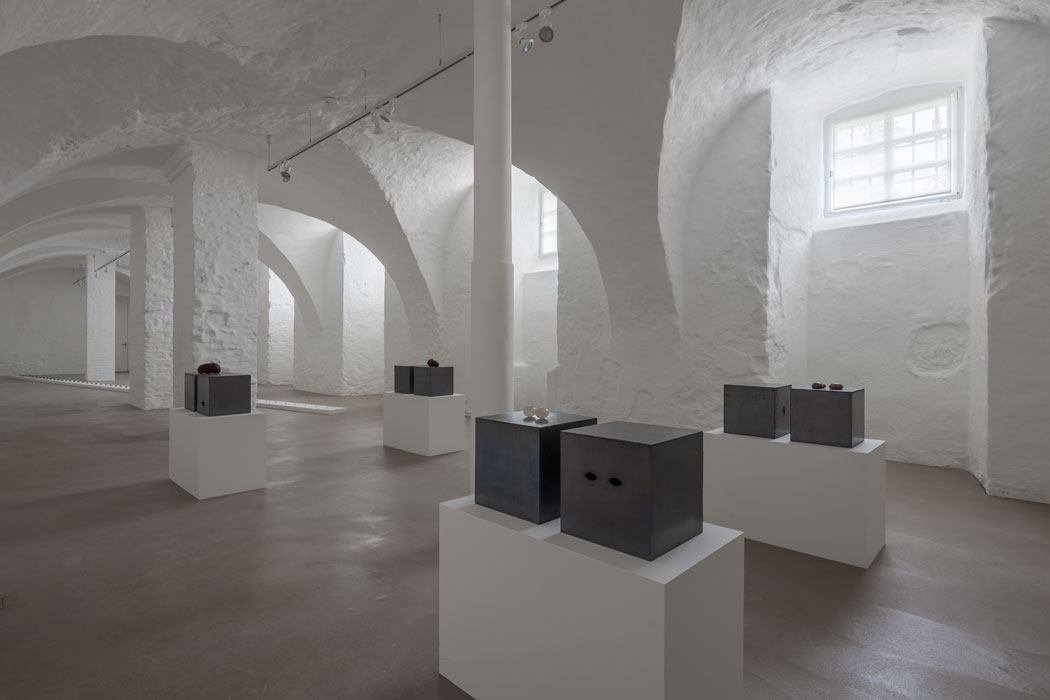
BEING, 2017
Installation view, Hall Art Foundation | Schloss Derneburg Museum, Derneburg, Germany, 2017
Photograph by Heinrich Hecht
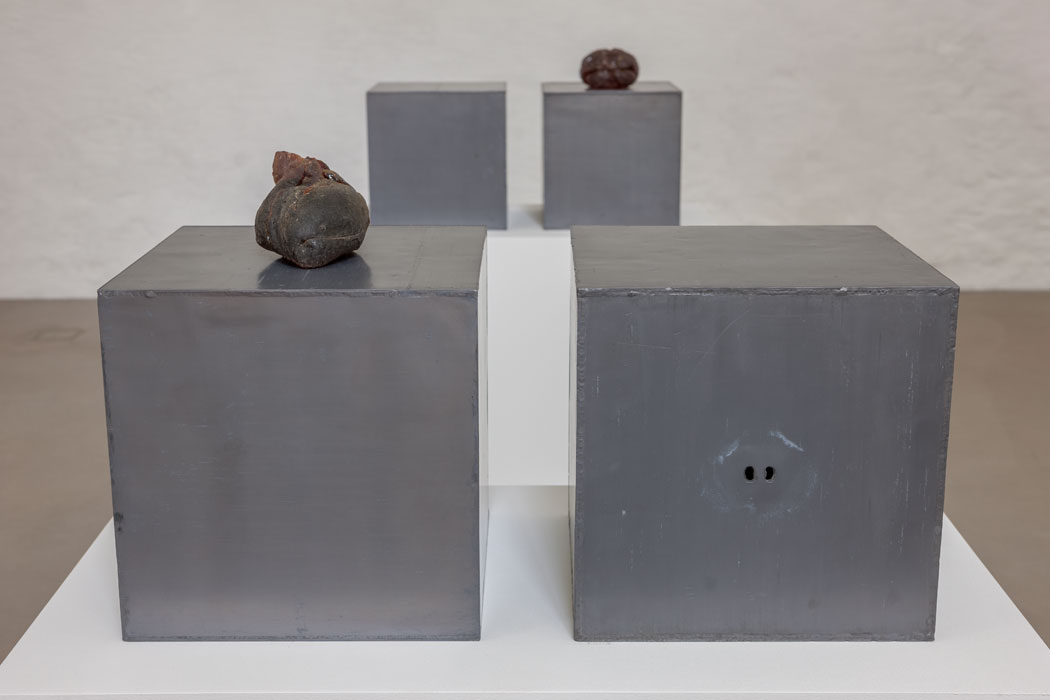
CENTRE AND BRIDGE, 1989/93
Lead, fibreglass, air and rosin
30.5 x 30.5 x 30.5 cm (each box)
8.8 x 12.5 x 12 cm (heart)
Installation view, Hall Art Foundation | Schloss Derneburg Museum, Derneburg, Germany, 2017
Photograph by Heinrich Hecht
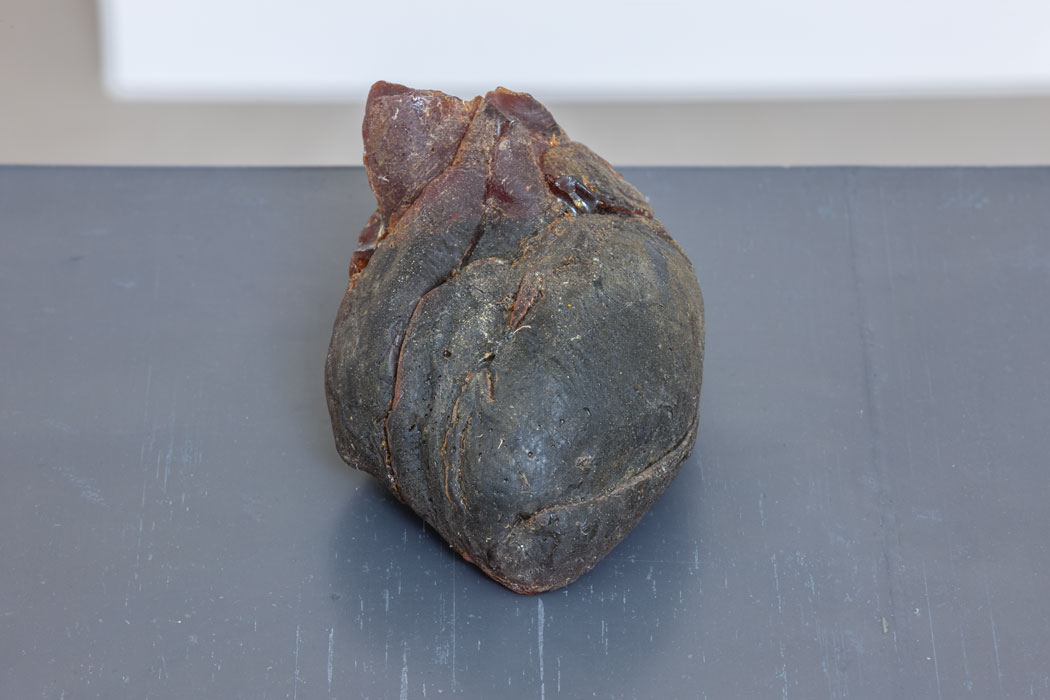
CENTRE, 1989/93
Lead, fibreglass, air and rosin
30.5 x 30.5 x 30.5 cm (box)
8.8 x 12.5 x 12 cm (heart)
Installation view, Hall Art Foundation | Schloss Derneburg Museum, Derneburg, Germany, 2017
Photograph by Heinrich Hecht
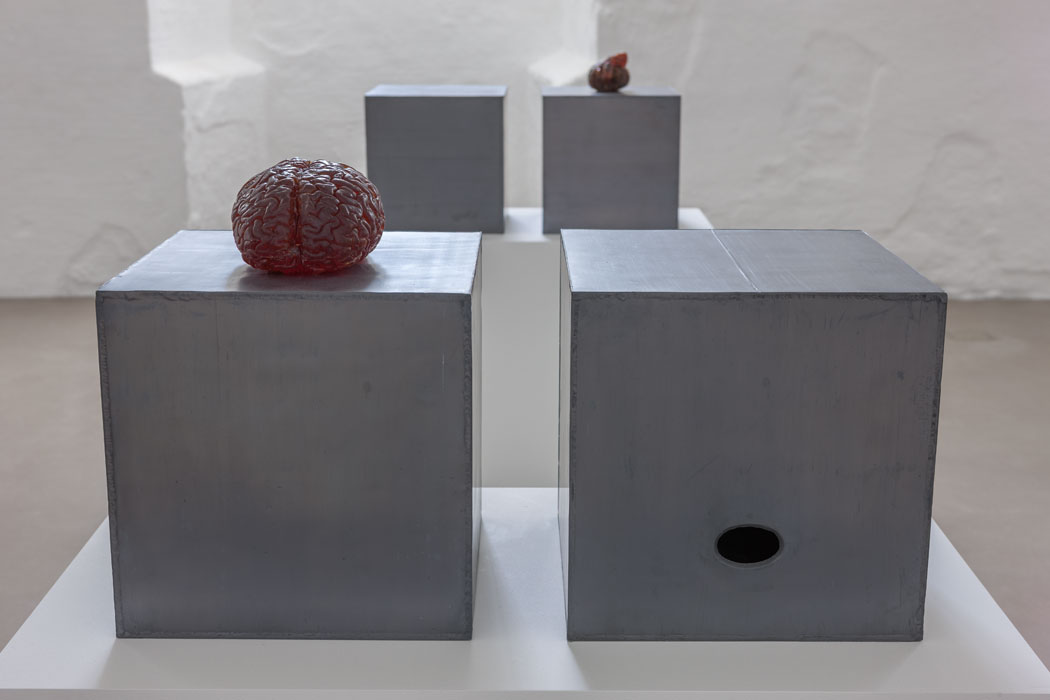
BODY AND LIGHT I AND MEANING, 1988/93
Lead, fibreglass, air and rosin
30.5 x 30.5 x 30.5 cm (each box)
9 x 13 x 16 cm (brain)
Installation view, Hall Art Foundation | Schloss Derneburg Museum, Derneburg, Germany, 2017
Photograph by Heinrich Hecht
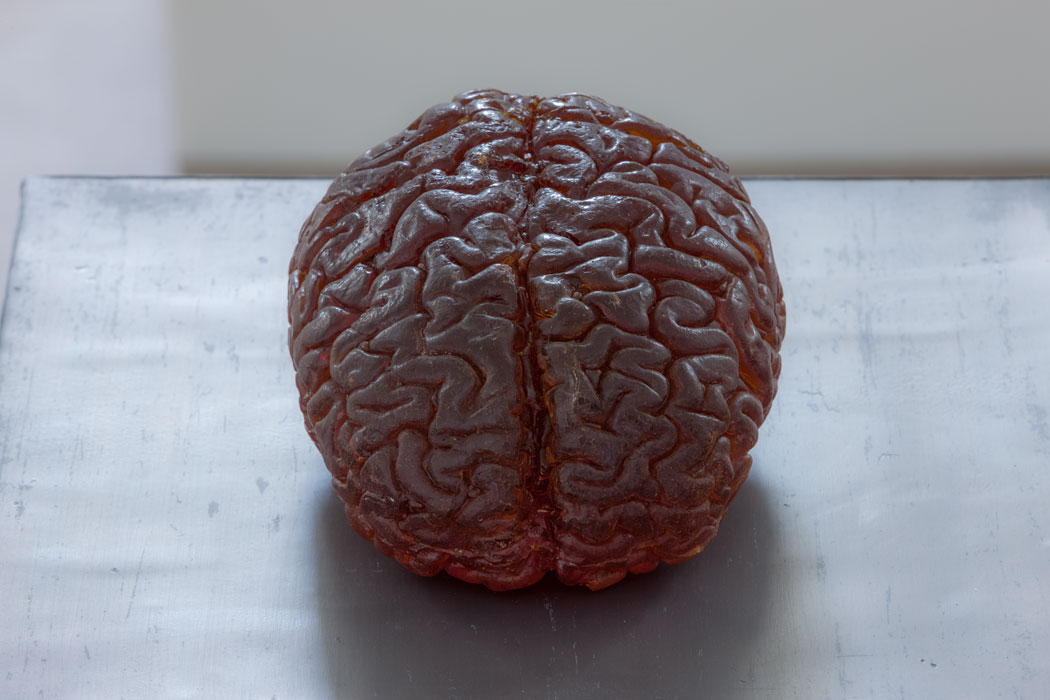
BODY AND LIGHT I, 1988/93
Lead, fibreglass, air and rosin
30.5 x 30.5 x 30.5 cm (box)
9 x 13 x 16 cm (brain)
Installation view, Hall Art Foundation | Schloss Derneburg Museum, Derneburg, Germany, 2017
Photograph by Heinrich Hecht
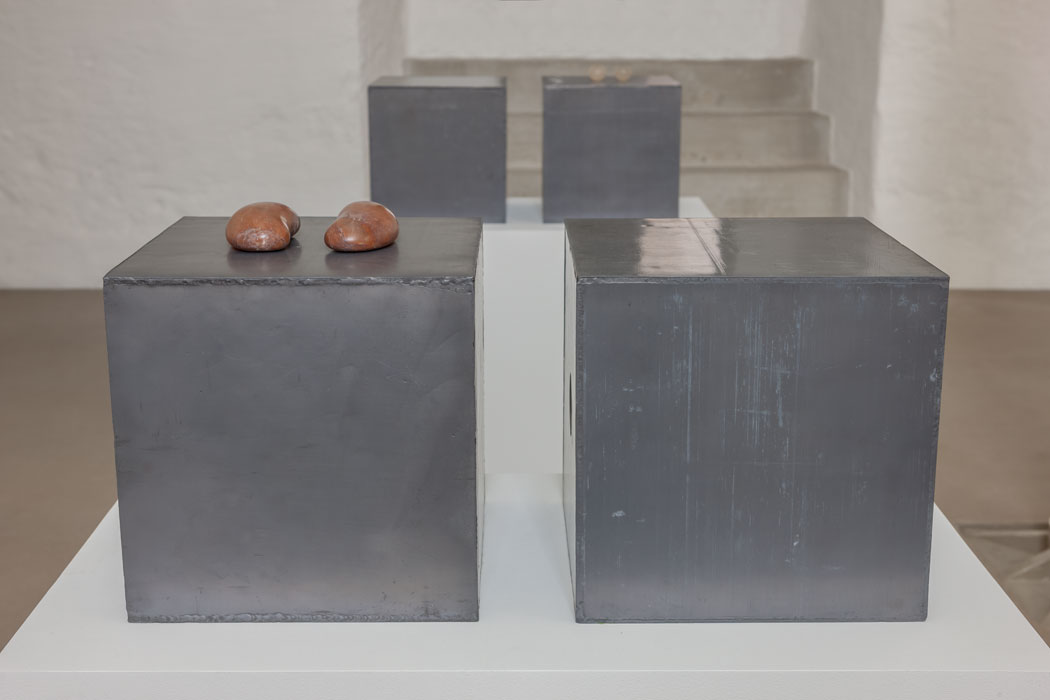
AUGUR AND ORACLE, 1989/93
Lead, fibreglass, air and alabaster
30.5 x 30.5 x 30.5 cm (each box)
3.5 x 6 x 11 cm (each kidney)
Installation view, Hall Art Foundation | Schloss Derneburg Museum, Derneburg, Germany, 2017
Photograph by Heinrich Hecht
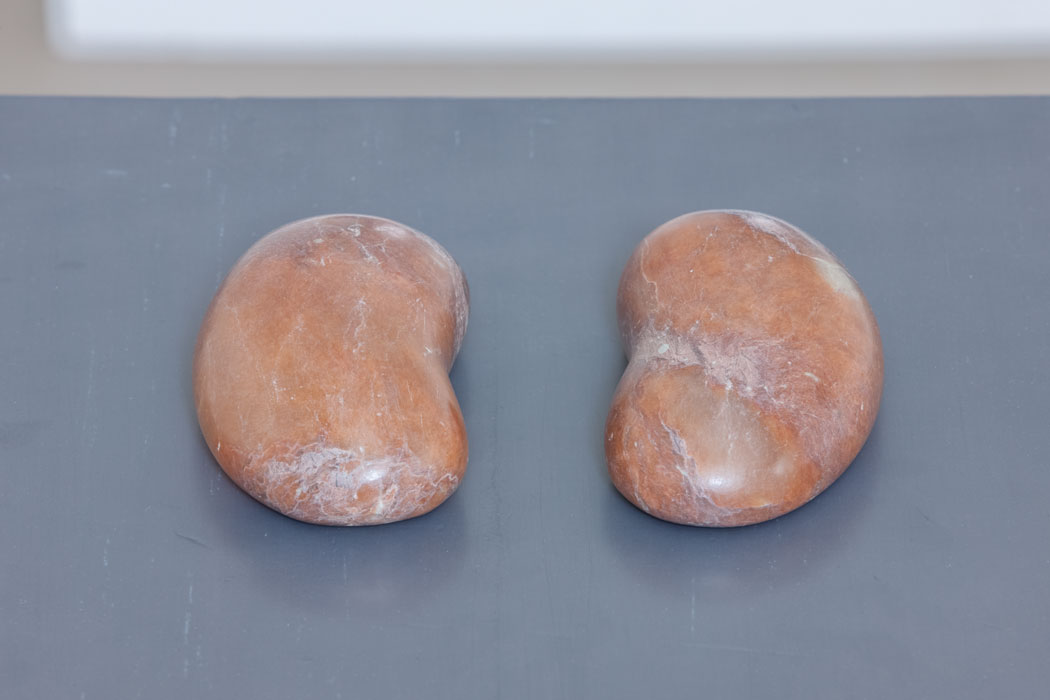
AUGUR, 1989/93
Lead, fibreglass, air and alabaster
30.5 x 30.5 x 30.5 cm (box)
3.5 x 6 x 11 cm (kidney)
Installation view, Hall Art Foundation | Schloss Derneburg Museum, Derneburg, Germany, 2017
Photograph by Heinrich Hecht
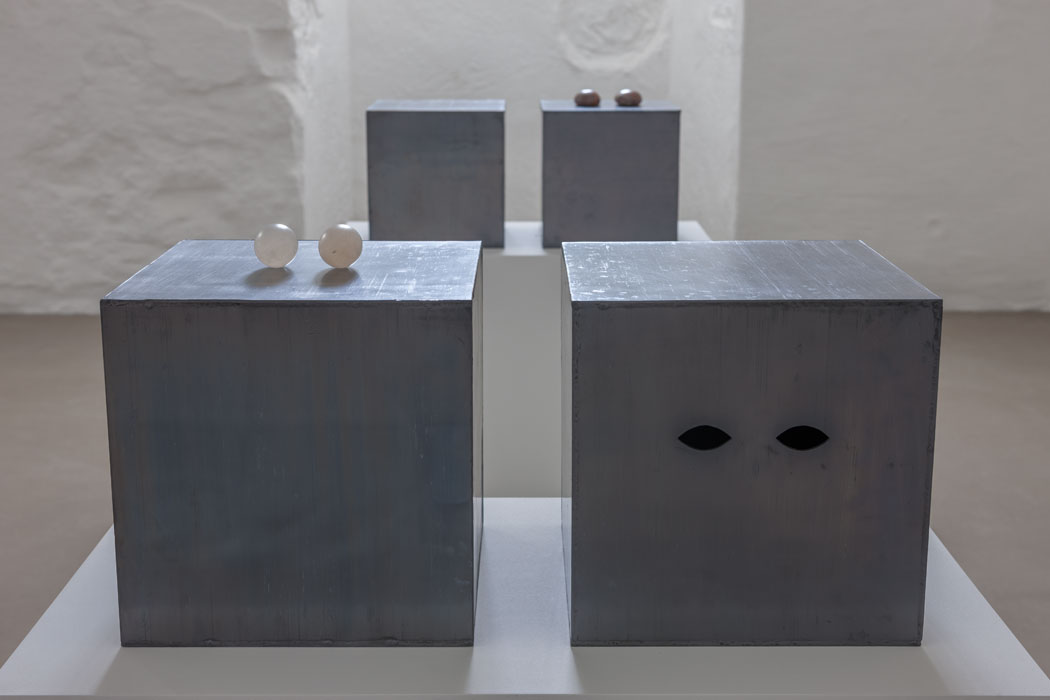
EXPOSURE AND INSTRUMENT, 1988/93
Lead, fibreglass, air and alabaster
30.5 x 30.5 x 30.5 cm (each box)
4 x 4 x 5.5 cm (each testicle)
Installation view, Hall Art Foundation | Schloss Derneburg Museum, Derneburg, Germany, 2017
Photograph by Heinrich Hecht
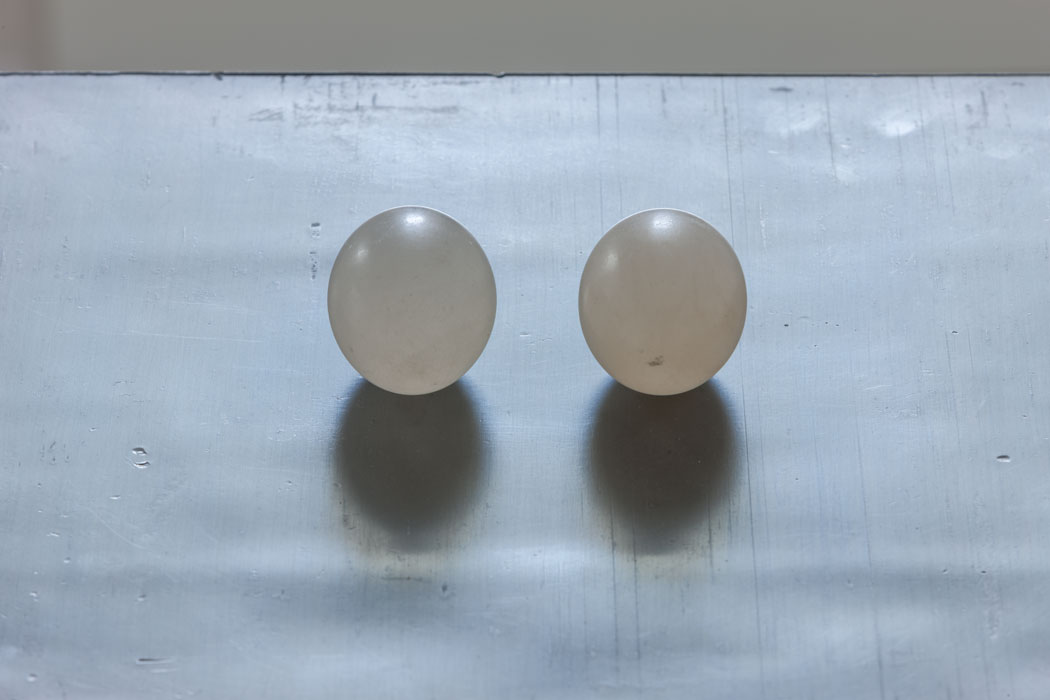
EXPOSURE, 1988/93
Lead, fibreglass, air and alabaster
30.5 x 30.5 x 30.5 cm (box)
4 x 4 x 5.5 cm (each testicle)
Installation view, Hall Art Foundation | Schloss Derneburg Museum, Derneburg, Germany, 2017
Photograph by Heinrich Hecht
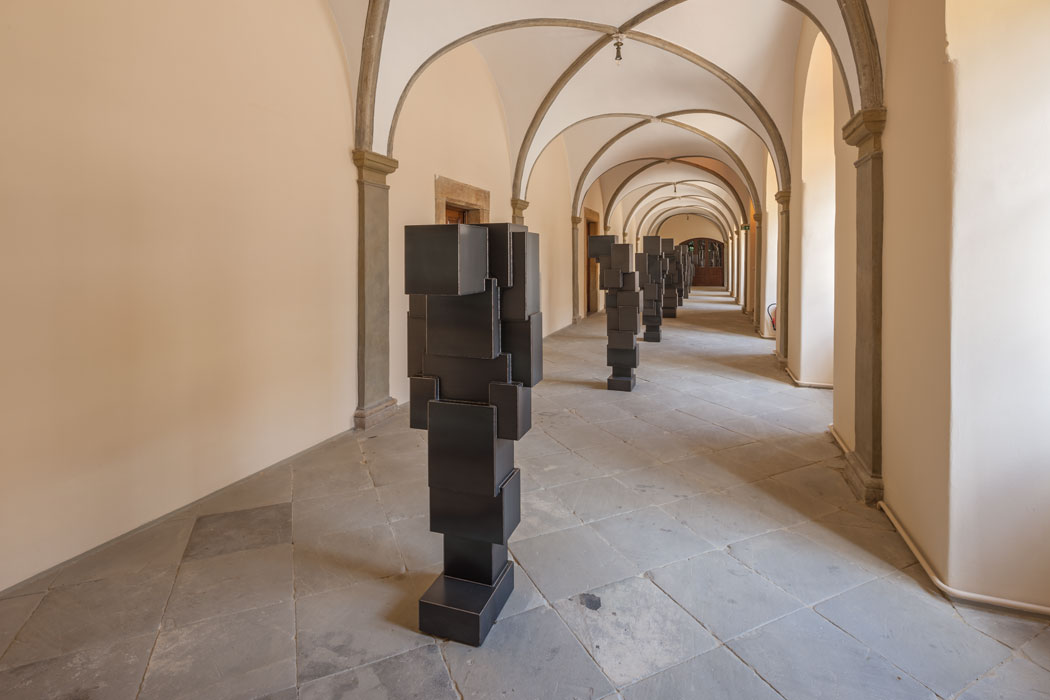
EXPANSION FIELD, 2014
4 mm Corten steel and air
22 elements; variable dimensions
Installation view, Hall Art Foundation | Schloss Derneburg Museum, Derneburg, Germany, 2017
Photograph by Heinrich Hecht
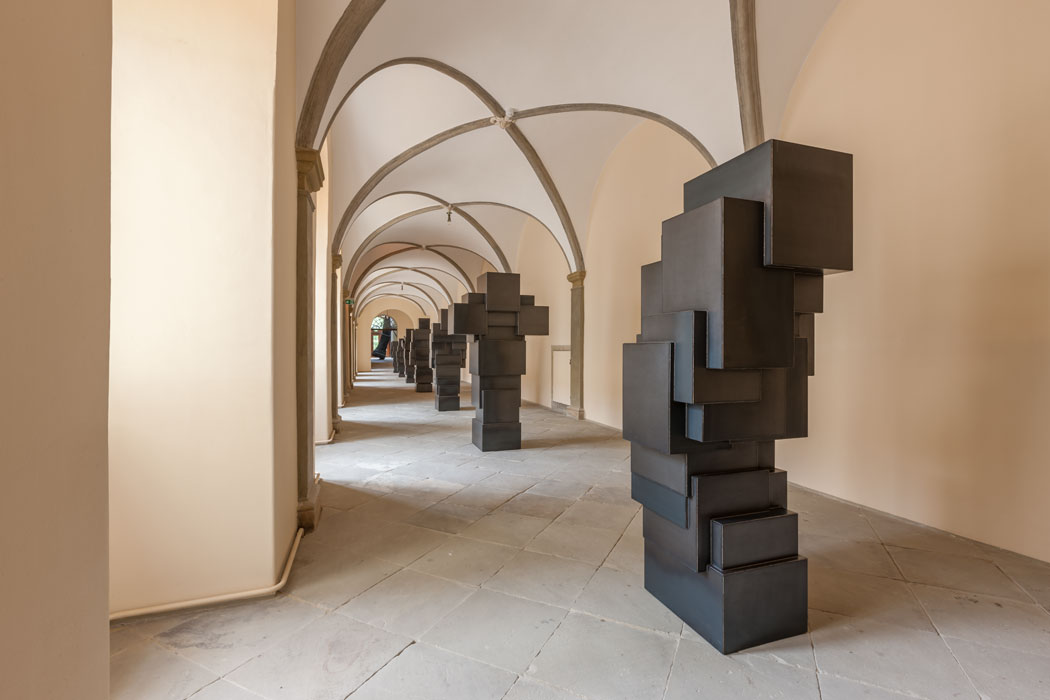
EXPANSION FIELD, 2014
4 mm Corten steel and air
22 elements; variable dimensions
Installation view, Hall Art Foundation | Schloss Derneburg Museum, Derneburg, Germany, 2017
Photograph by Heinrich Hecht
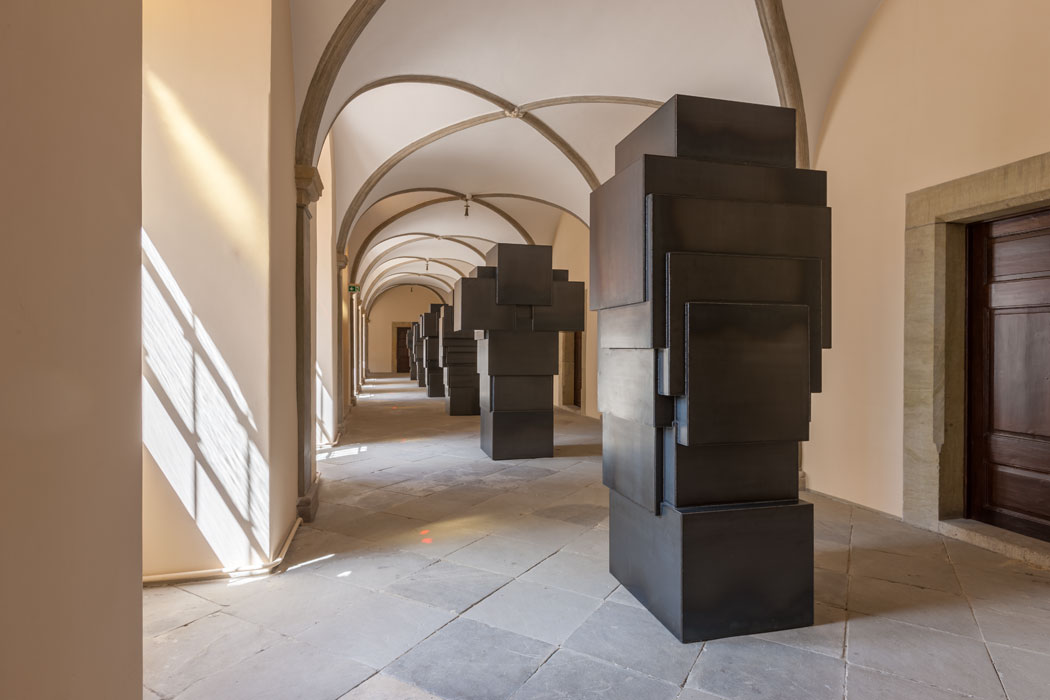
EXPANSION FIELD, 2014
4 mm Corten steel and air
22 elements; variable dimensions
Installation view, Hall Art Foundation | Schloss Derneburg Museum, Derneburg, Germany, 2017
Photograph by Heinrich Hecht
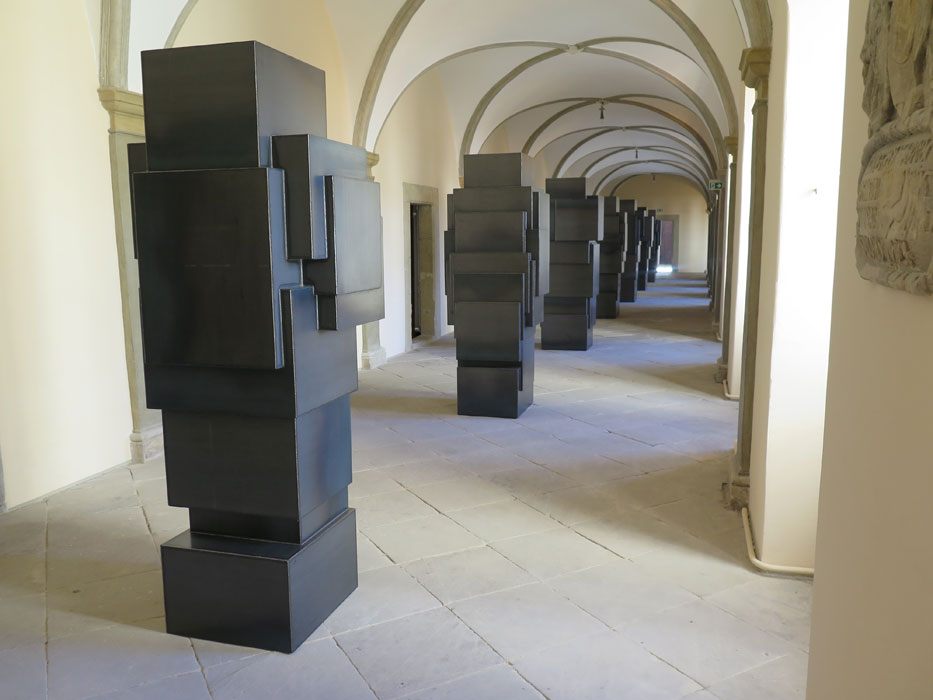
EXPANSION FIELD, 2014
4 mm Corten steel and air
22 elements; variable dimensions
Installation view, Hall Art Foundation | Schloss Derneburg Museum, Derneburg, Germany, 2017
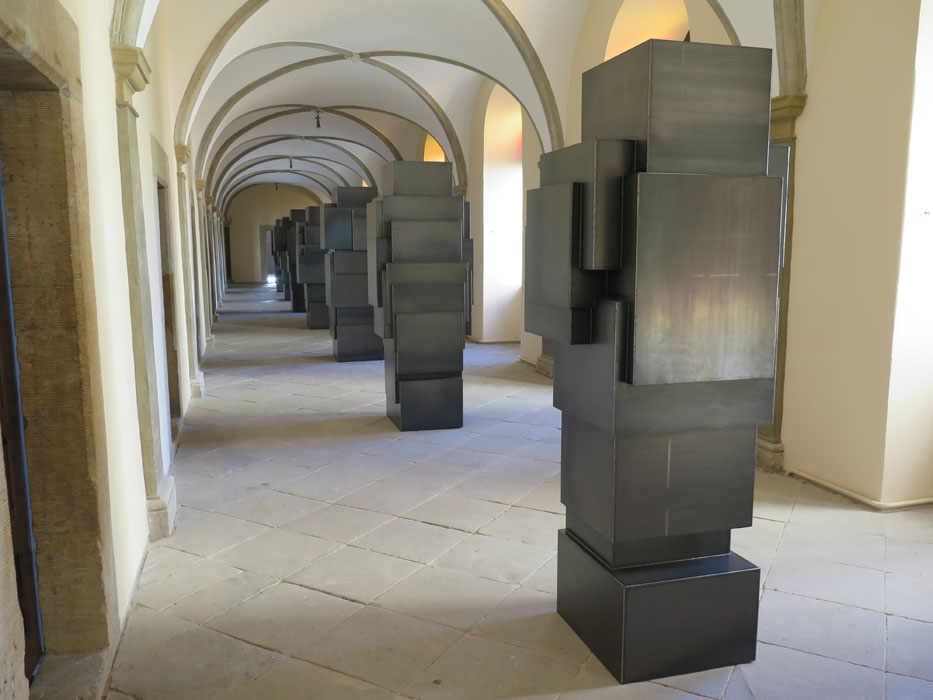
EXPANSION FIELD, 2014
4 mm Corten steel and air
22 elements; variable dimensions
Installation view, Hall Art Foundation | Schloss Derneburg Museum, Derneburg, Germany, 2017
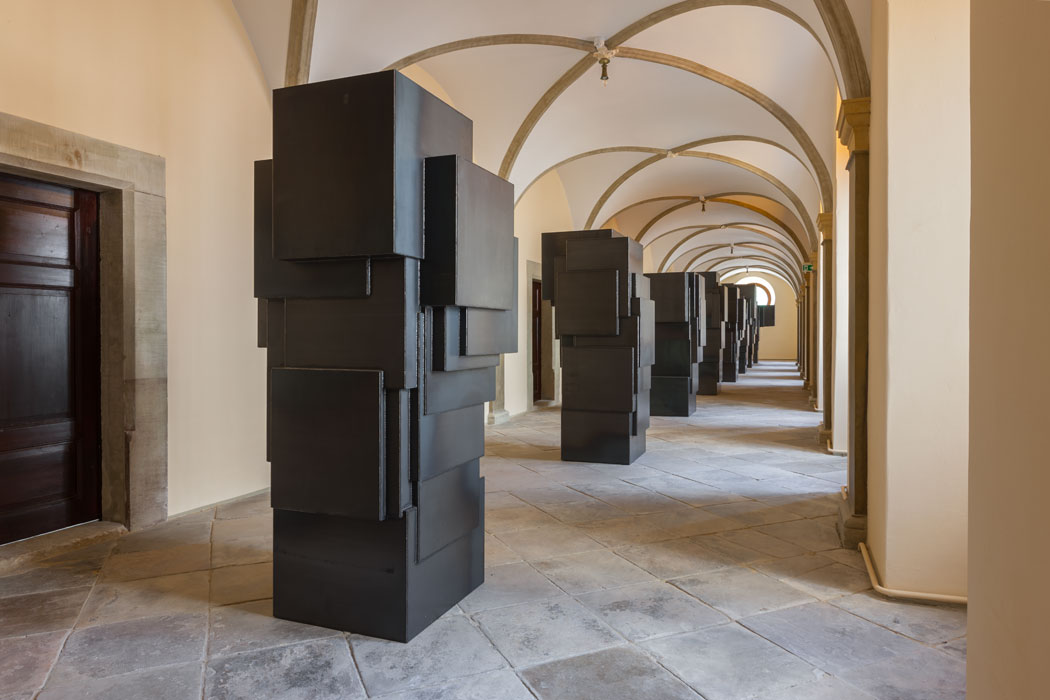
EXPANSION FIELD, 2014
4 mm Corten steel and air
22 elements; variable dimensions
Installation view, Hall Art Foundation | Schloss Derneburg Museum, Derneburg, Germany, 2017
Photograph by Heinrich Hecht
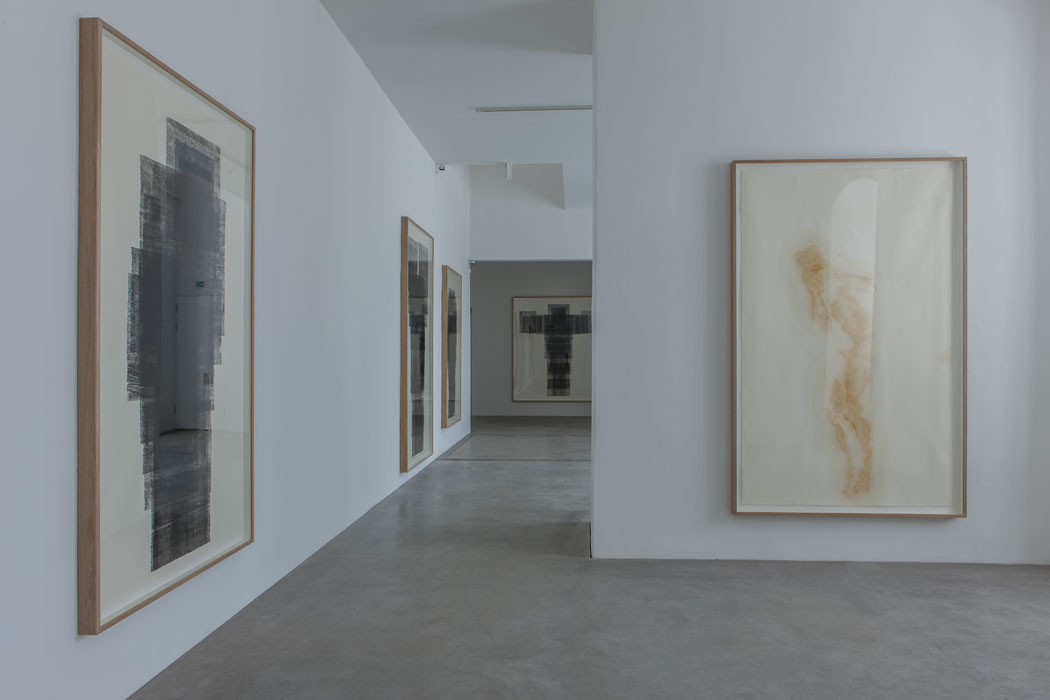
BEING, 2017
Installation view, Hall Art Foundation | Schloss Derneburg Museum, Derneburg, Germany, 2017
Photograph by Heinrich Hecht
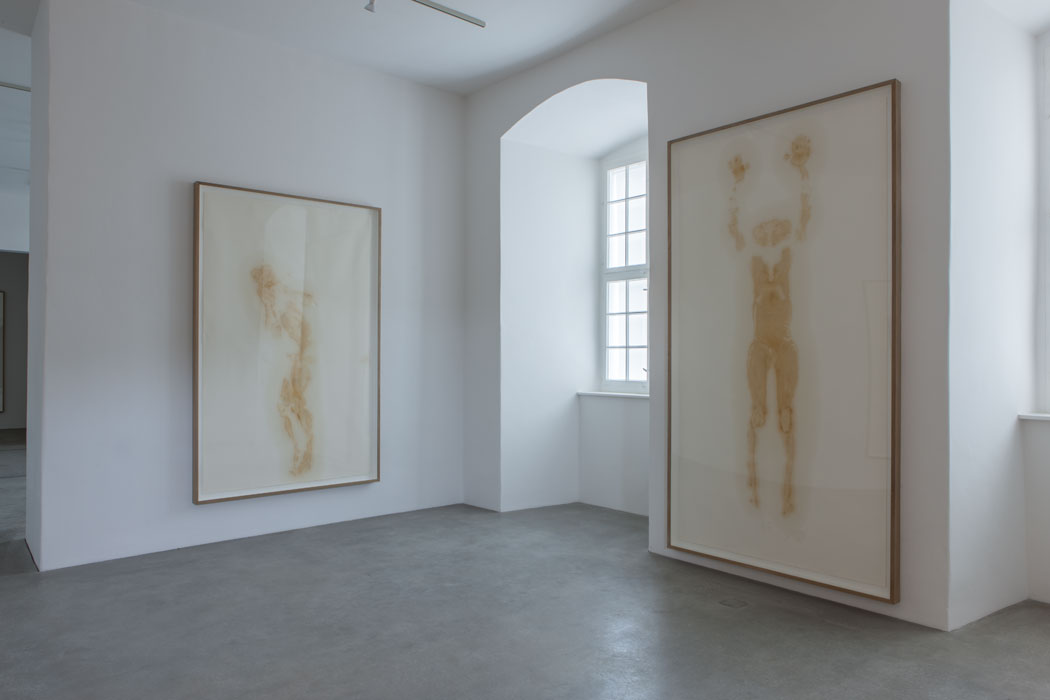
FEEL III, 2016
Crude oil, linseed oil and petroleum jelly on paper
249 x 153.5 cm
BREATHE II, 2016
Crude oil, linseed oil and petroleum jelly on paper
298 x 153.5 cm
Installation view, Hall Art Foundation | Schloss Derneburg Museum, Derneburg, Germany, 2017
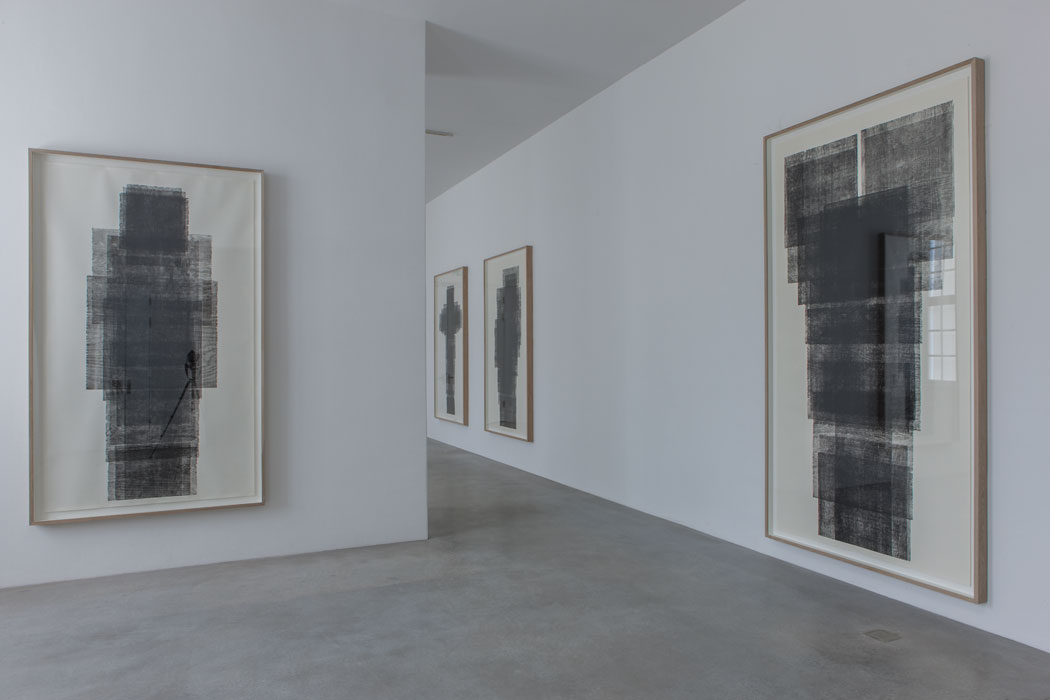
BEING, 2016
Installation view, Hall Art Foundation | Schloss Derneburg Museum, Derneburg, Germany, 2017
Photograph by Heinrich Hecht
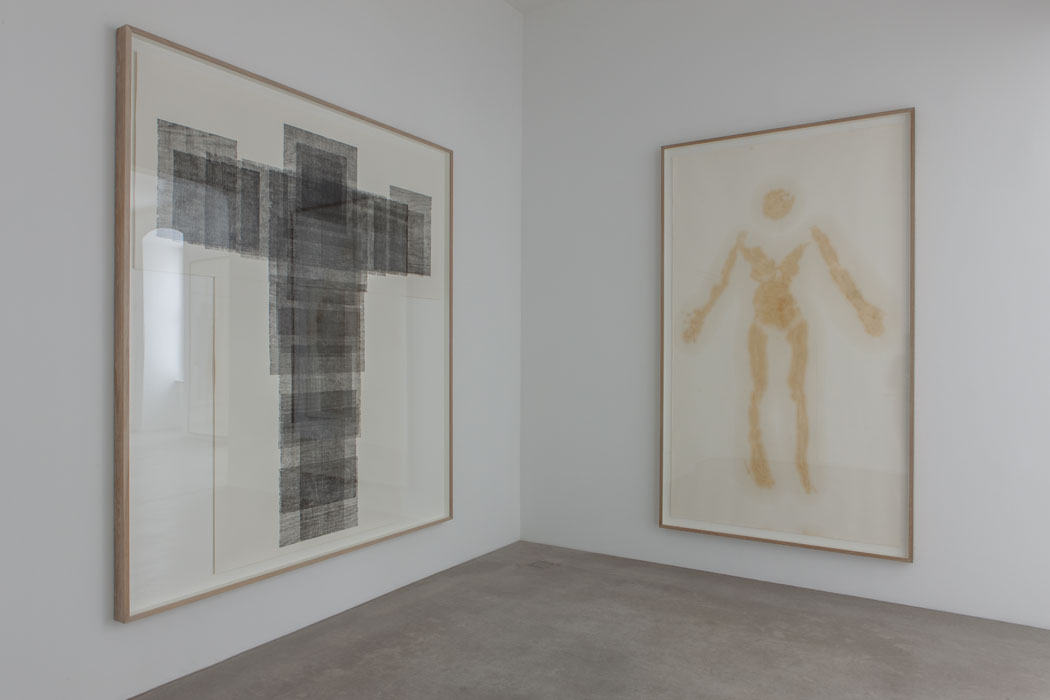
QUARTER, 2016
Woodcut on Saunders 190 gsm smooth paper
245.4 x 214.9cm
SHOW IV, 2016
Crude oil, linseed oil and petroleum jelly on paper
263 x 149 cm
Installation view, Hall Art Foundation | Schloss Derneburg Museum, Derneburg, Germany, 2017
Photograph by Heinri
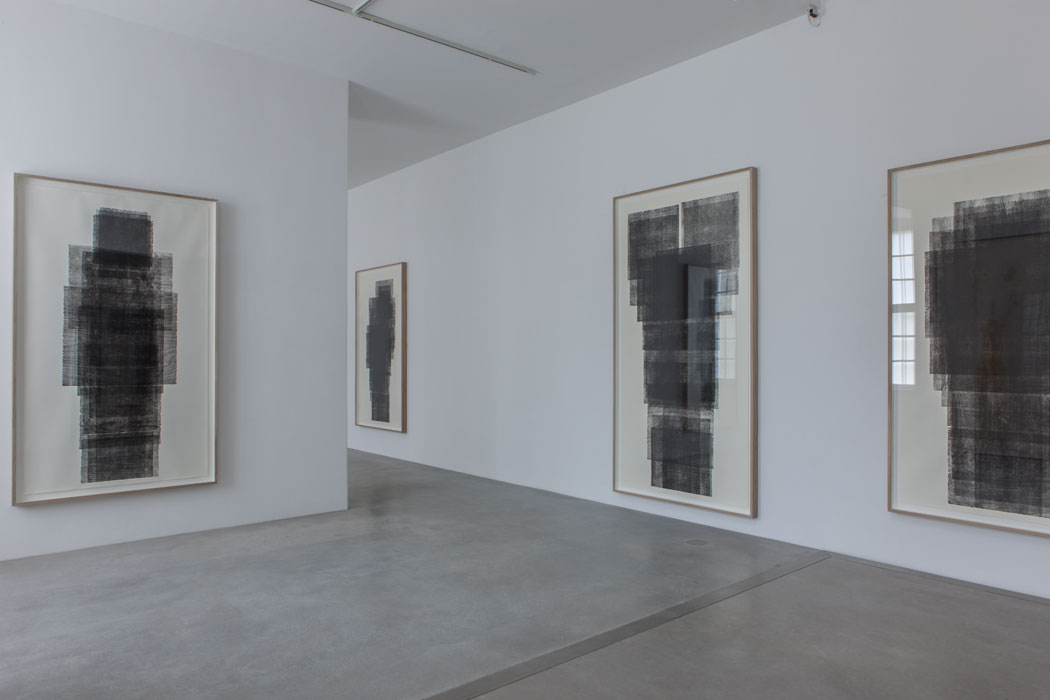
BEING, 2016
Installation view, Hall Art Foundation | Schloss Derneburg Museum, Derneburg, Germany, 2017
Photograph by Heinrich Hecht
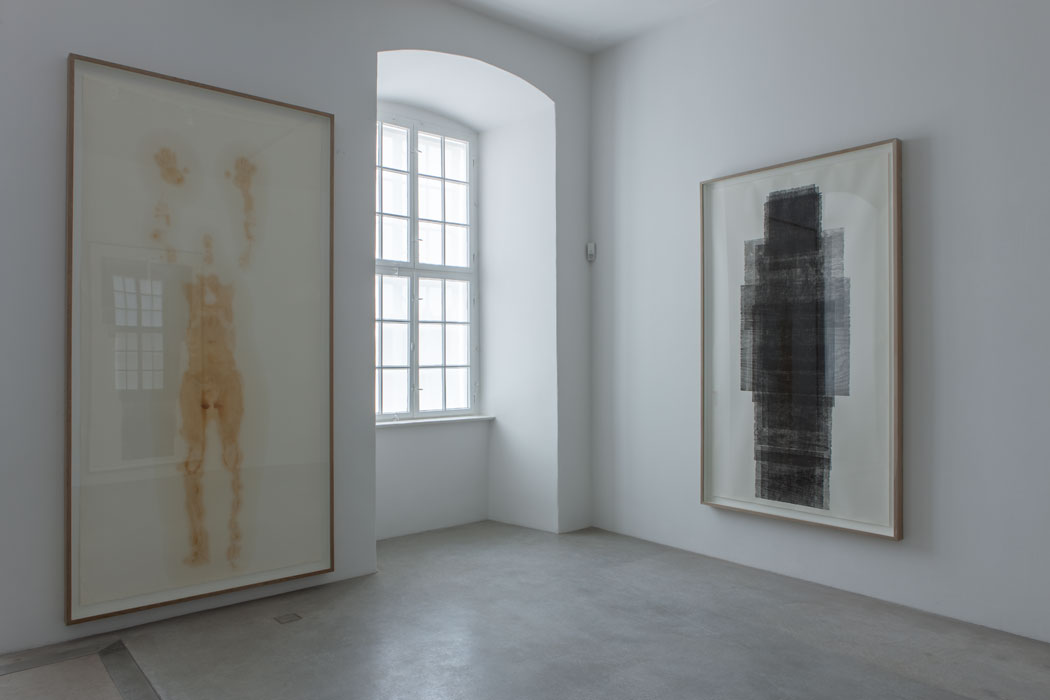
REACH, 2016
Crude oil, linseed oil and petroleum jelly on paper
298 x 141 cm
FALL, 2016
Woodcut on Saunders 190 gsm smooth paper
237.1 x 134 cm
Installation view, Hall Art Foundation | Schloss Derneburg Museum, Derneburg, Germany, 2017
Photograph by Heinrich H
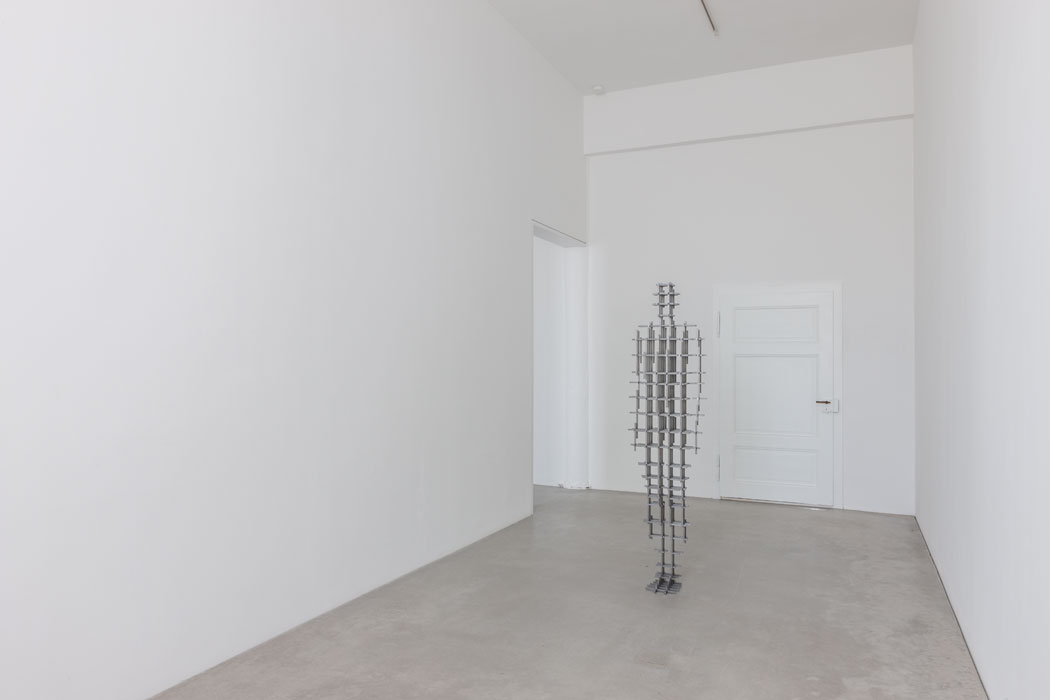
SET II, 2017
10 mm square section mild steel bar
192.8 x 50.5 x 29.8 cm
Installation view, Hall Art Foundation | Schloss Derneburg Museum, Derneburg, Germany, 2017
Photograph by Heinrich Hecht
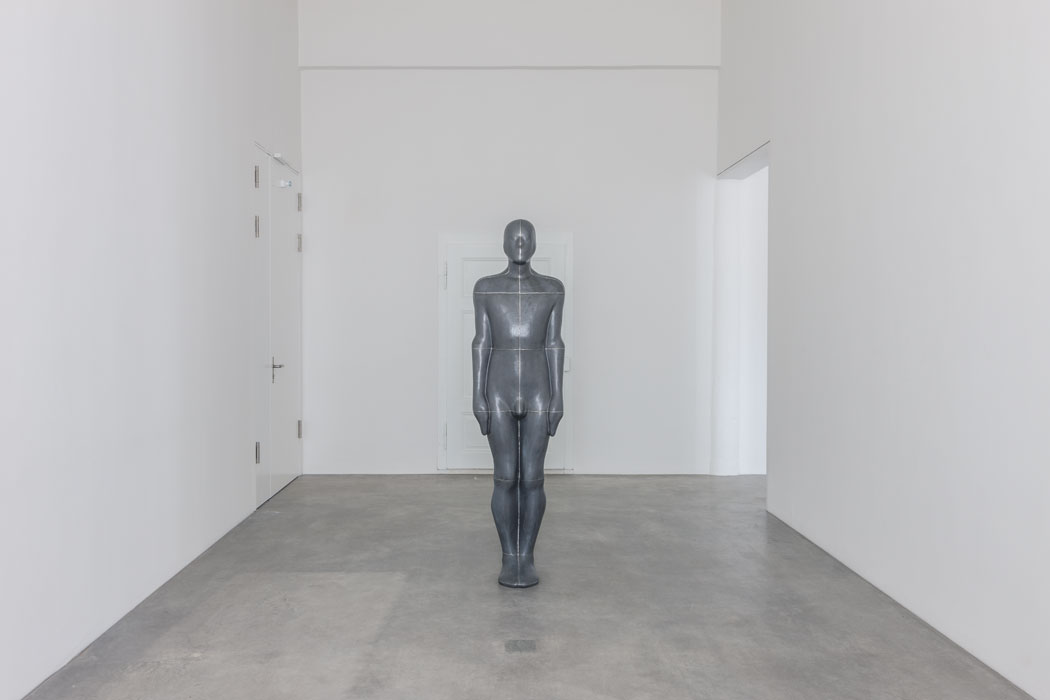
LEARNING TO SEE III, 1993
Lead, fibreglass, plaster and air
197 x 53 x 36 cm
Collection of Sammlung Hoffmann, Berlin
Installation view, Hall Art Foundation | Schloss Derneburg Museum, Derneburg, Germany, 2017
Photograph by Heinrich Hecht
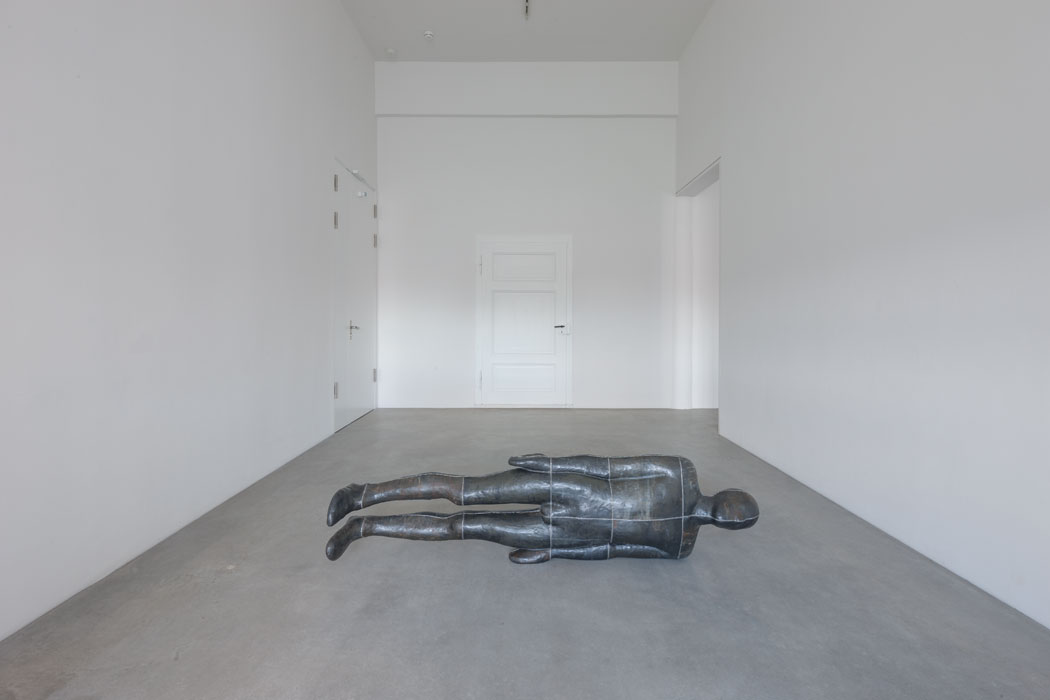
SEAM, 1988
Lead, fibreglass, plaster and air
50 x 197 x 43 cm
Installation view, Hall Art Foundation | Schloss Derneburg Museum, Derneburg, Germany, 2017
Photograph by Heinrich Hecht
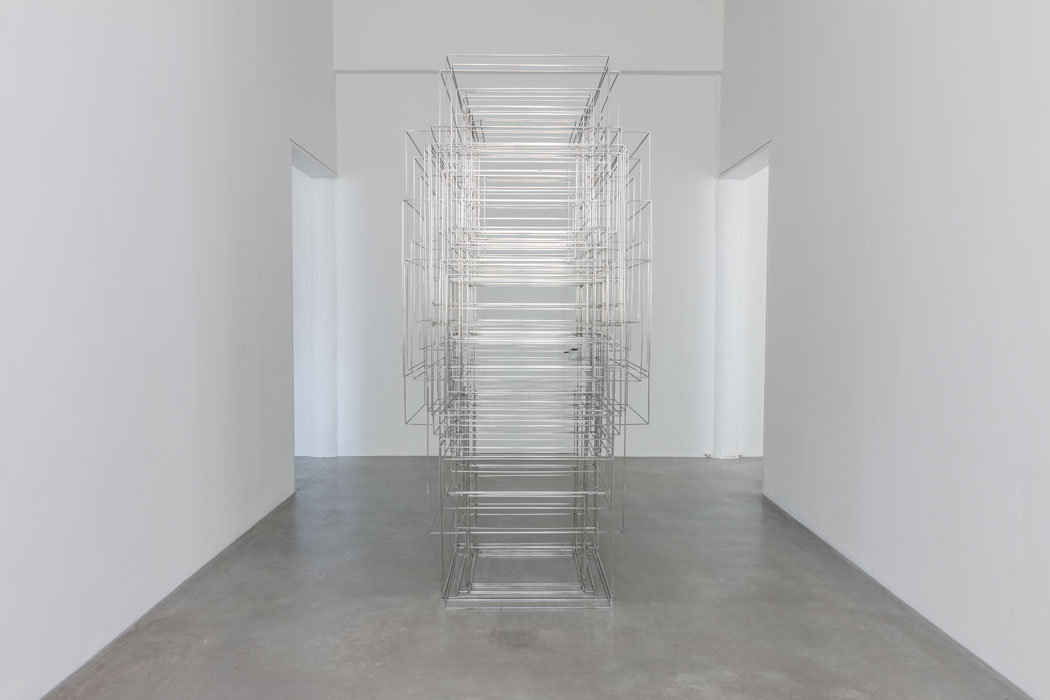
FIT, 2016
5 mm square section stainless steel bar
267 x 122 x 104 cm
Installation view, Hall Art Foundation | Schloss Derneburg Museum, Derneburg, Germany, 2017
Courtesy White Cube
Photograph by Heinrich Hecht
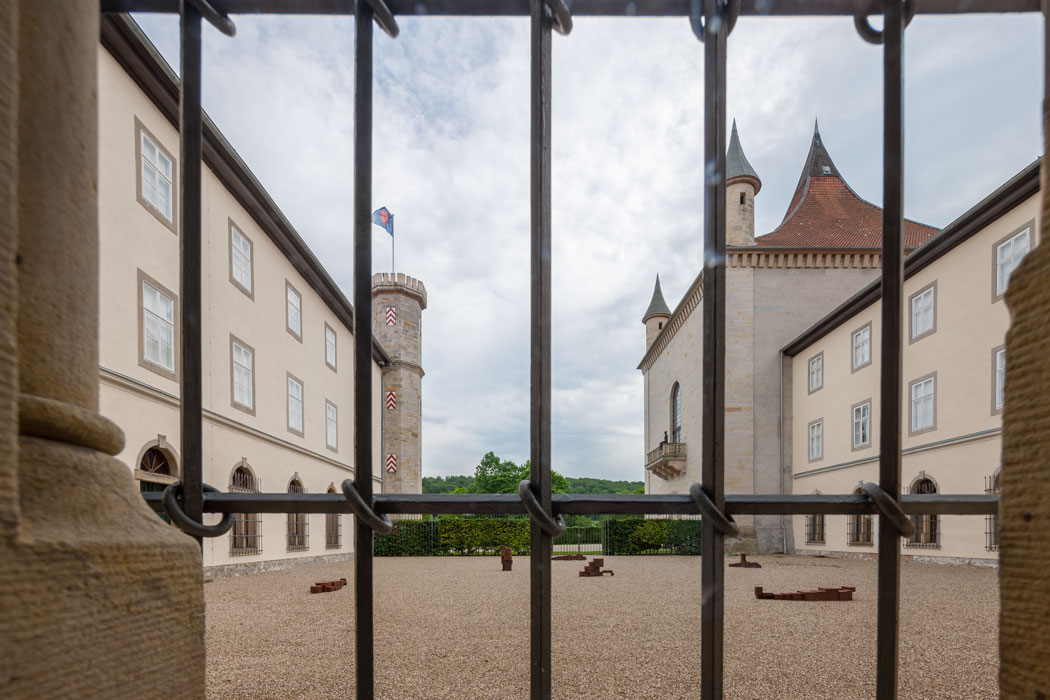
BEING, 2017
Installation view, Hall Art Foundation | Schloss Derneburg Museum, Derneburg, Germany, 2017
Photograph by Heinrich Hecht
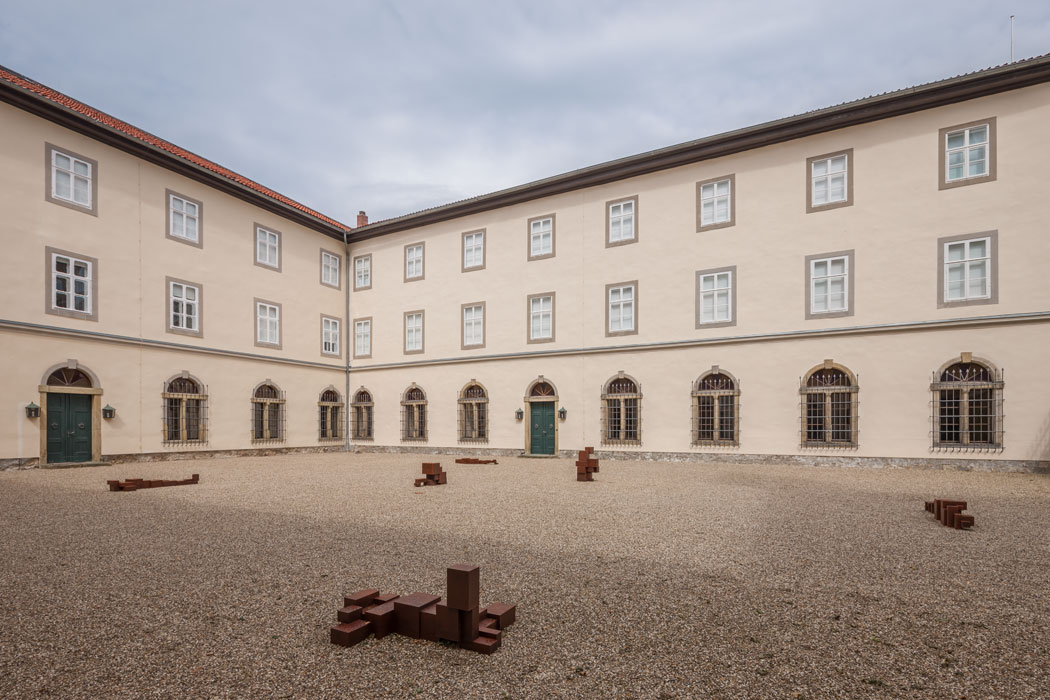
BEING, 2017
Installation view, Hall Art Foundation | Schloss Derneburg Museum, Derneburg, Germany, 2017
Photograph by Heinrich Hecht
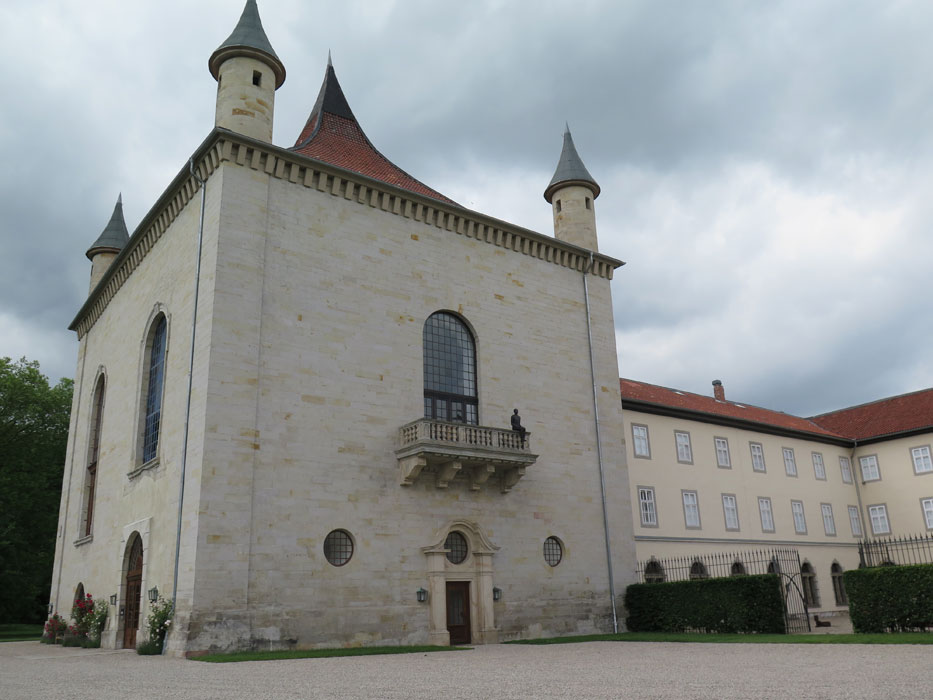
SEAT, 2017
Fibreglass
153 x 51 x 77 cm
Installation view, Hall Art Foundation | Schloss Derneburg Museum, Derneburg, Germany, 2017
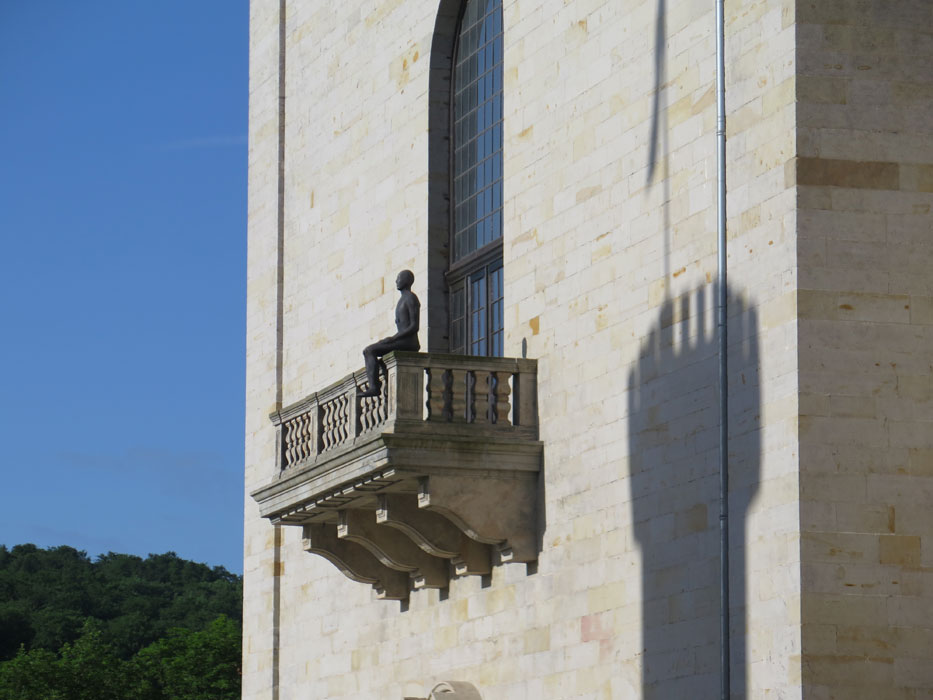
SEAT, 2017
Fibreglass
153 x 51 x 77 cm
Installation view, Hall Art Foundation | Schloss Derneburg Museum, Derneburg, Germany, 2017
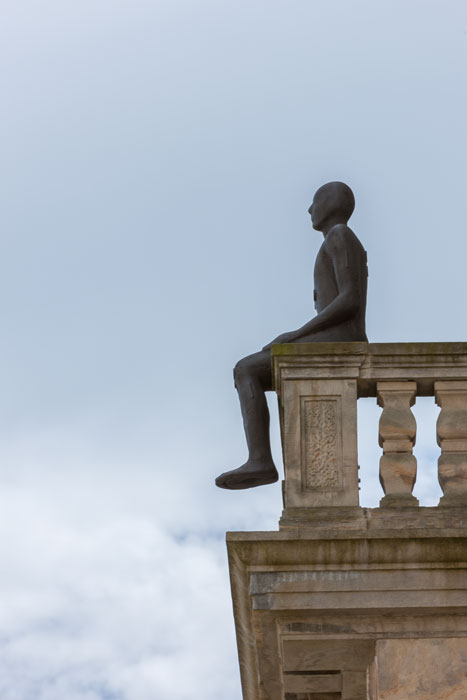
SEAT, 2017
Fibreglass
153 x 51 x 77 cm
Installation view, Hall Art Foundation | Schloss Derneburg Museum, Derneburg, Germany, 2017
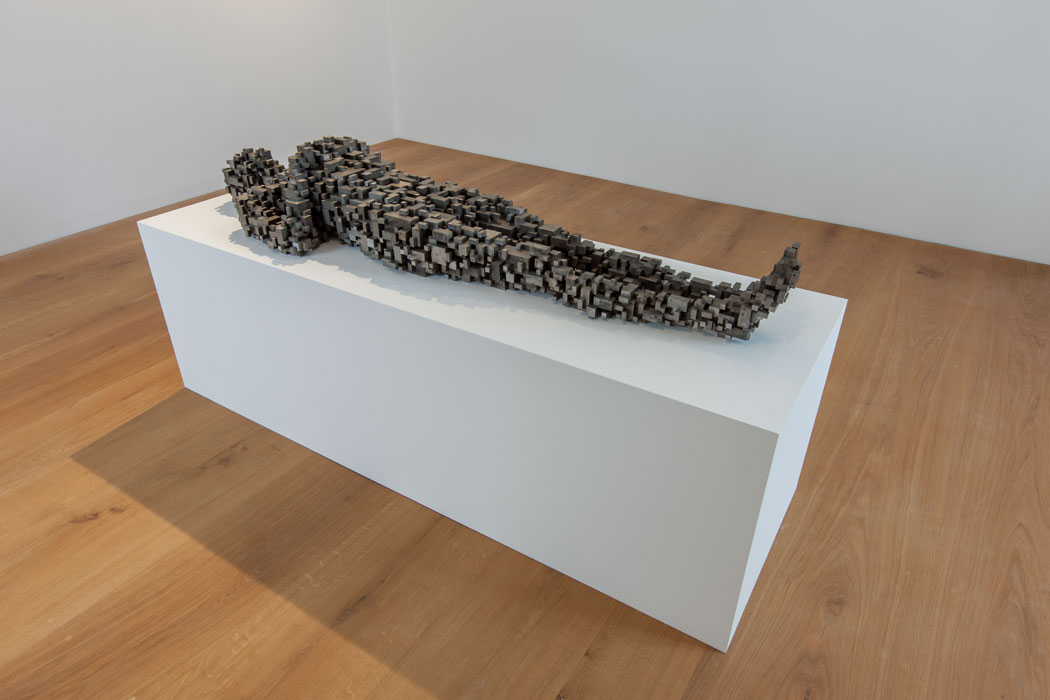
DISTILLATE I, 2003
Variable mild steel blocks
200 x 58 x 29.5 cm
Hall Collection
Installation view, Hall Art Foundation | Schloss Derneburg Museum, Derneburg, Germany, 2017
Photograph by Heinrich Hecht
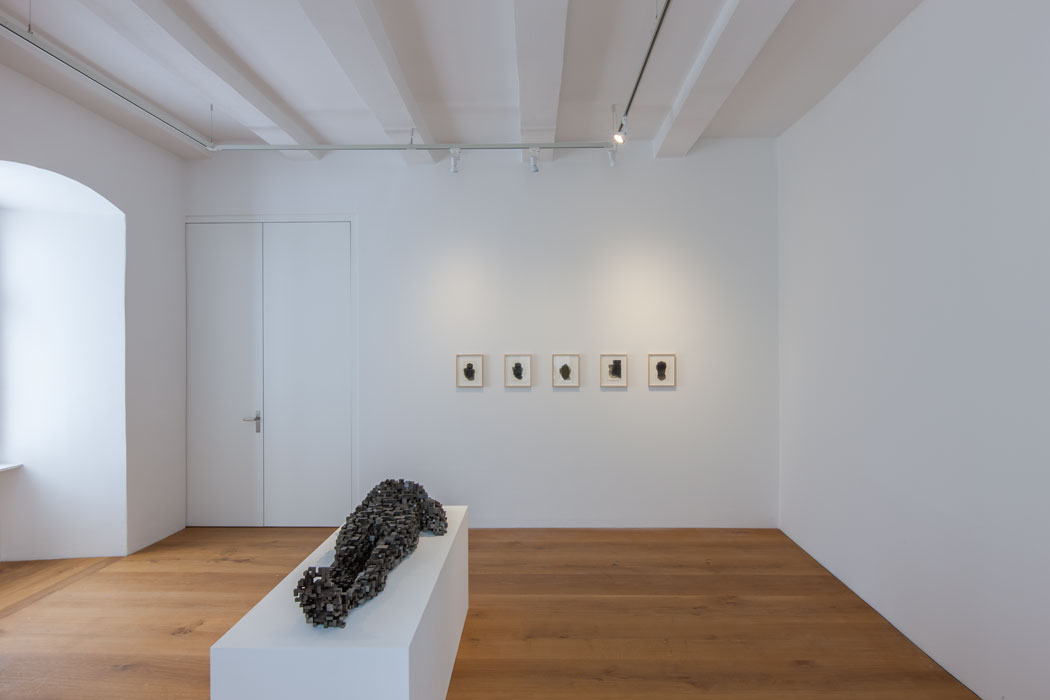
BEING, 2017
Installation view, Hall Art Foundation | Schloss Derneburg Museum, Derneburg, Germany, 2017
Photograph by Heinrich Hecht
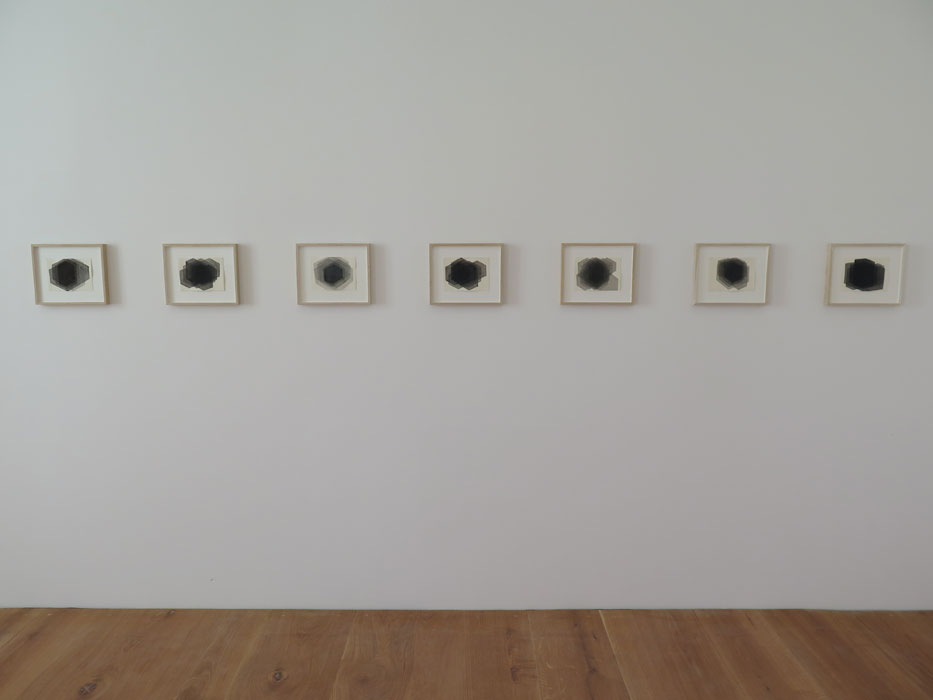
BEING, 2017
Installation view, Hall Art Foundation | Schloss Derneburg Museum, Derneburg, Germany, 2017
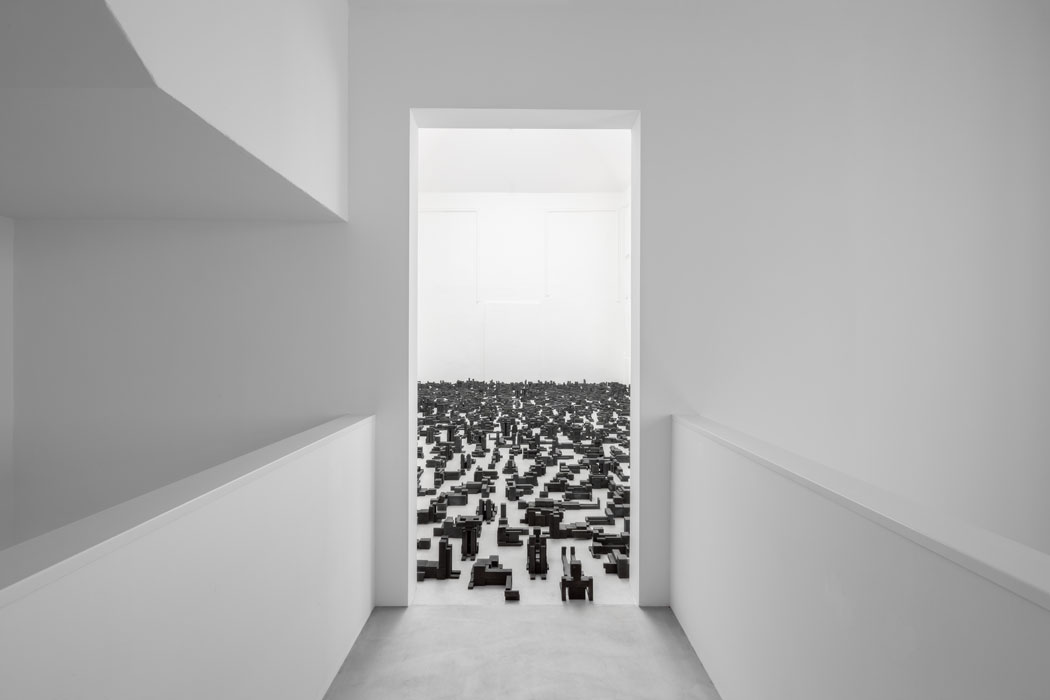
SLEEPING FIELD, 2015-16
Cast iron
700 elements; dimensions variable
Installation view, Hall Art Foundation | Schloss Derneburg Museum, Derneburg, Germany, 2017
Courtesy White Cube
Photograph by Heinrich Hecht
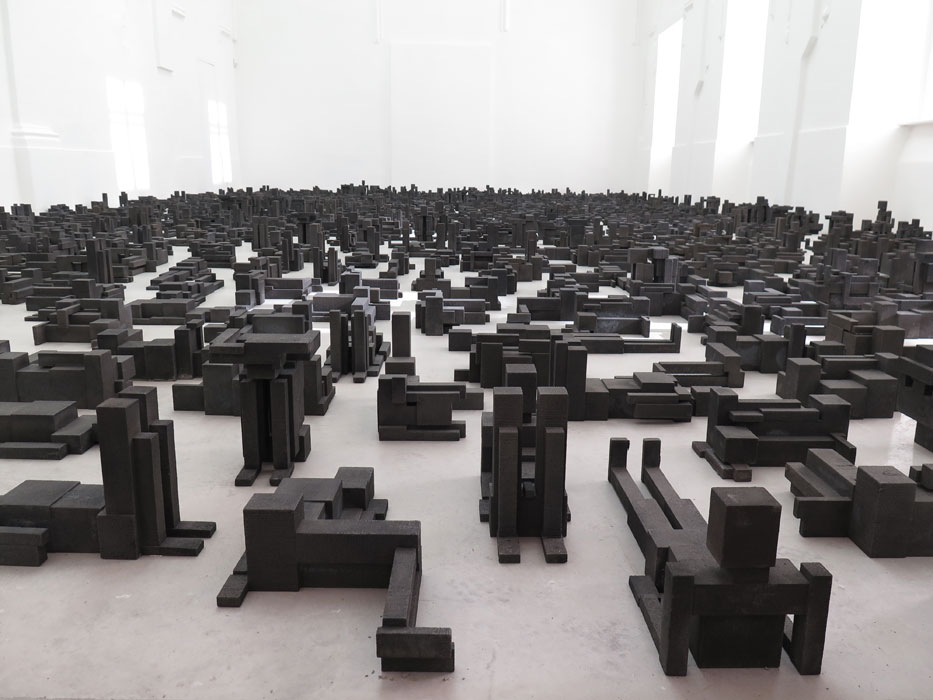
SLEEPING FIELD, 2015-16
Cast iron
700 elements; dimensions variable
Installation view, Hall Art Foundation | Schloss Derneburg Museum, Derneburg, Germany, 2017
Courtesy White Cube
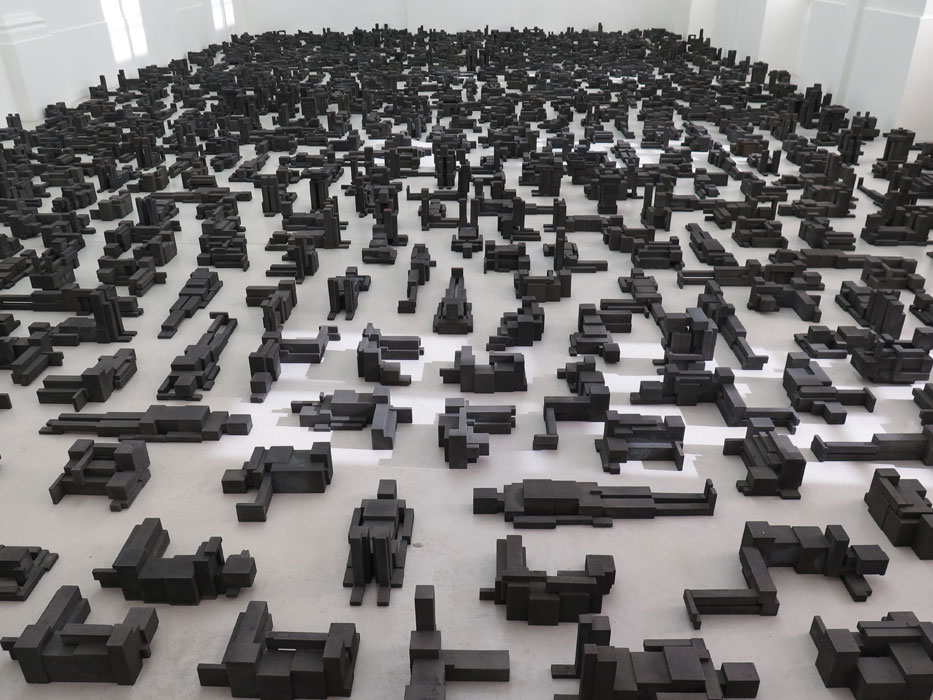
SLEEPING FIELD, 2015-16
Cast iron
700 elements; dimensions variable
Installation view, Hall Art Foundation | Schloss Derneburg Museum, Derneburg, Germany, 2017
Courtesy White Cube
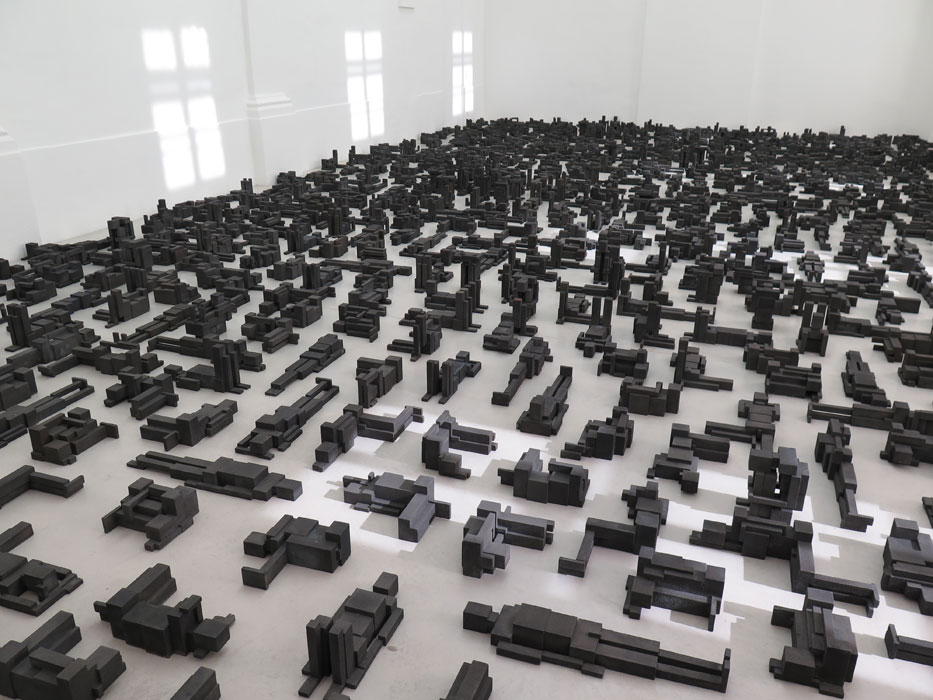
SLEEPING FIELD, 2015-16
Cast iron
700 elements; dimensions variable
Installation view, Hall Art Foundation | Schloss Derneburg Museum, Derneburg, Germany, 2017
Courtesy White Cube
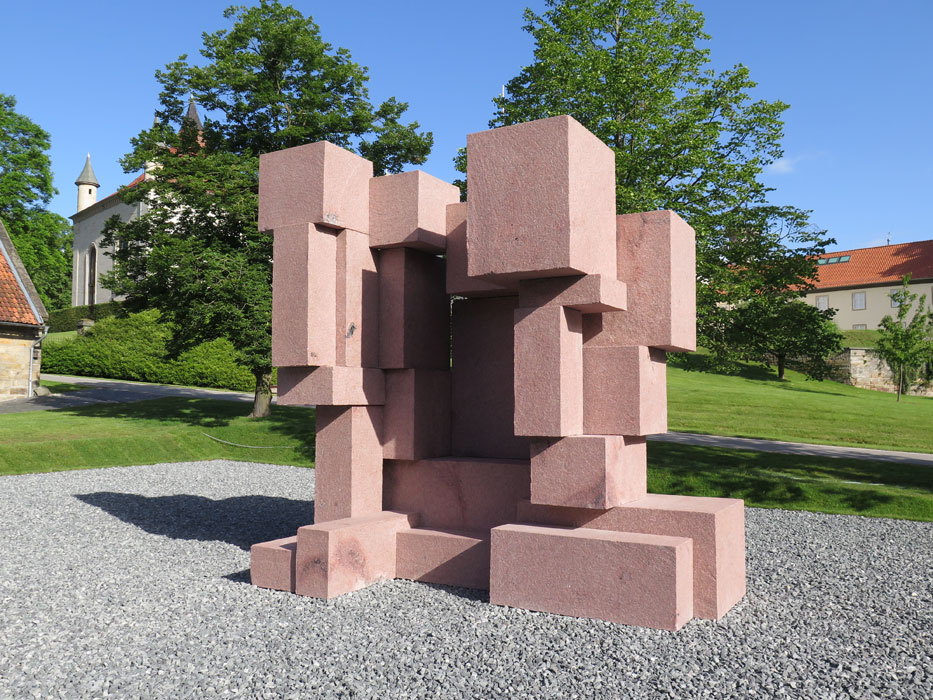
BLOCK II, 2017
Granite
405 x 414 x 327 cm
Installation view, Hall Art Foundation | Schloss Derneburg Museum, Derneburg, Germany, 2017
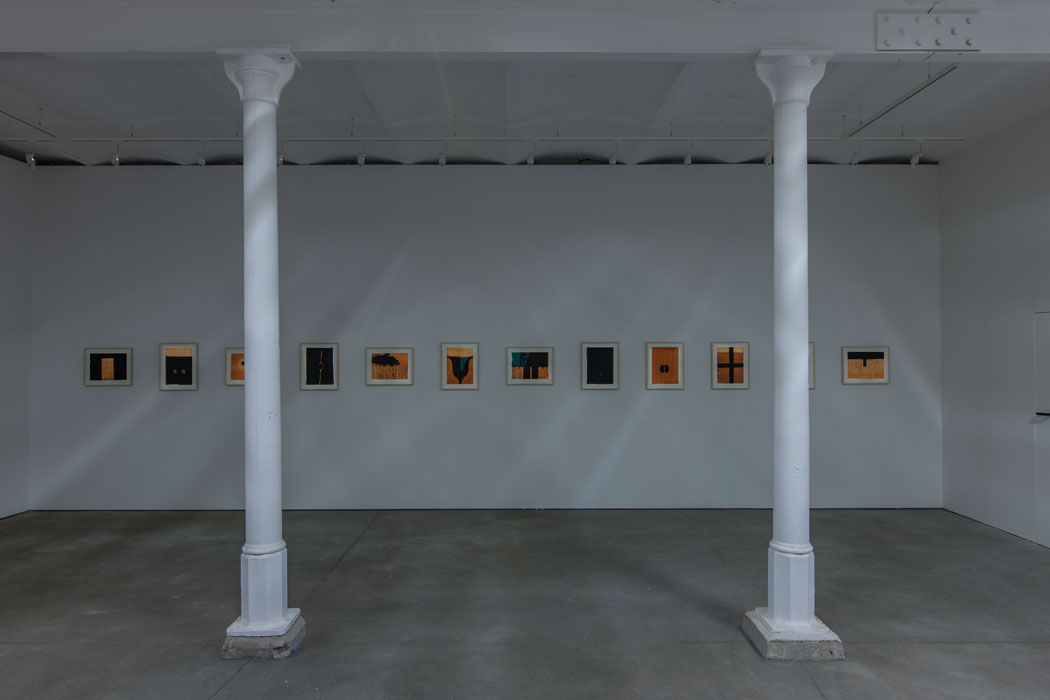
BEING, 2016
Installation view, Hall Art Foundation | Schloss Derneburg Museum, Derneburg, Germany, 2017
Photograph by Heinrich Hecht
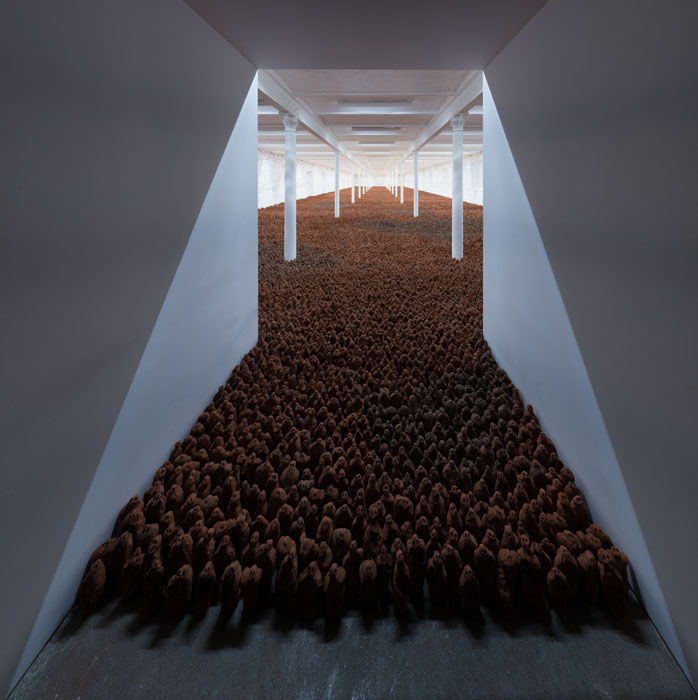
EUROPEAN FIELD, 1993
Terracotta
Variable size: approx. 35,000 elements, each 8-26 cm high
Installation view, Hall Art Foundation | Schloss Derneburg Museum, Derneburg, Germany, 2017
Courtesy White Cube
Photograph by Heinrich Hecht
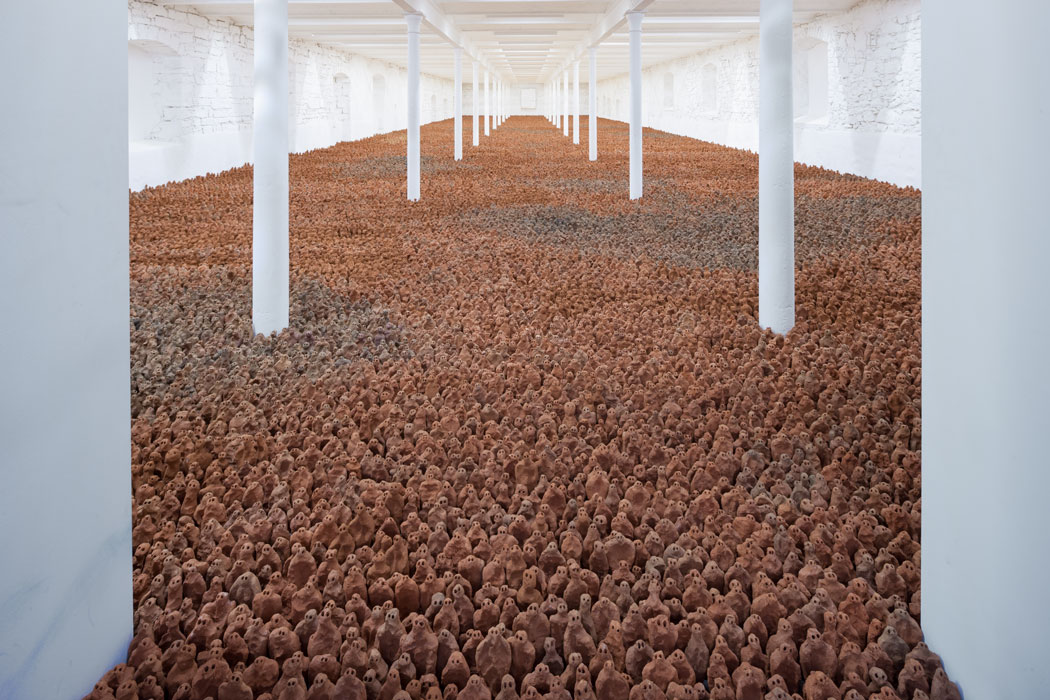
EUROPEAN FIELD, 1993
Terracotta
Variable size: approx. 35,000 elements, each 8-26 cm high
Installation view, Hall Art Foundation | Schloss Derneburg Museum, Derneburg, Germany, 2017
Courtesy White Cube
Photograph by Heinrich Hecht
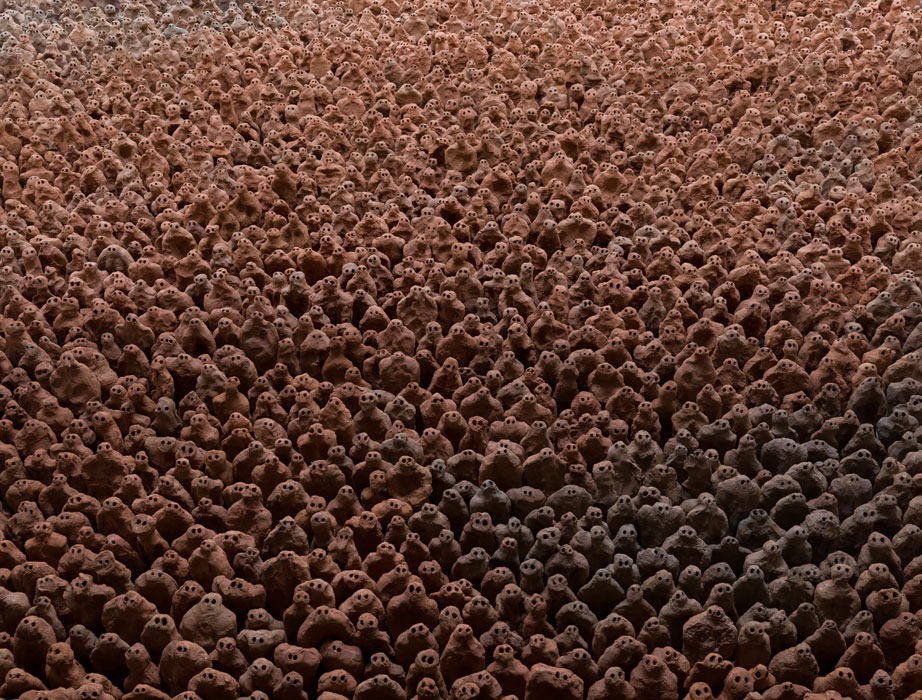
EUROPEAN FIELD, 1993
Terracotta
Variable size: approx. 35,000 elements, each 8-26 cm high
Installation view, Hall Art Foundation | Schloss Derneburg Museum, Derneburg, Germany, 2017
Courtesy White Cube
Photograph by Heinrich Hecht
